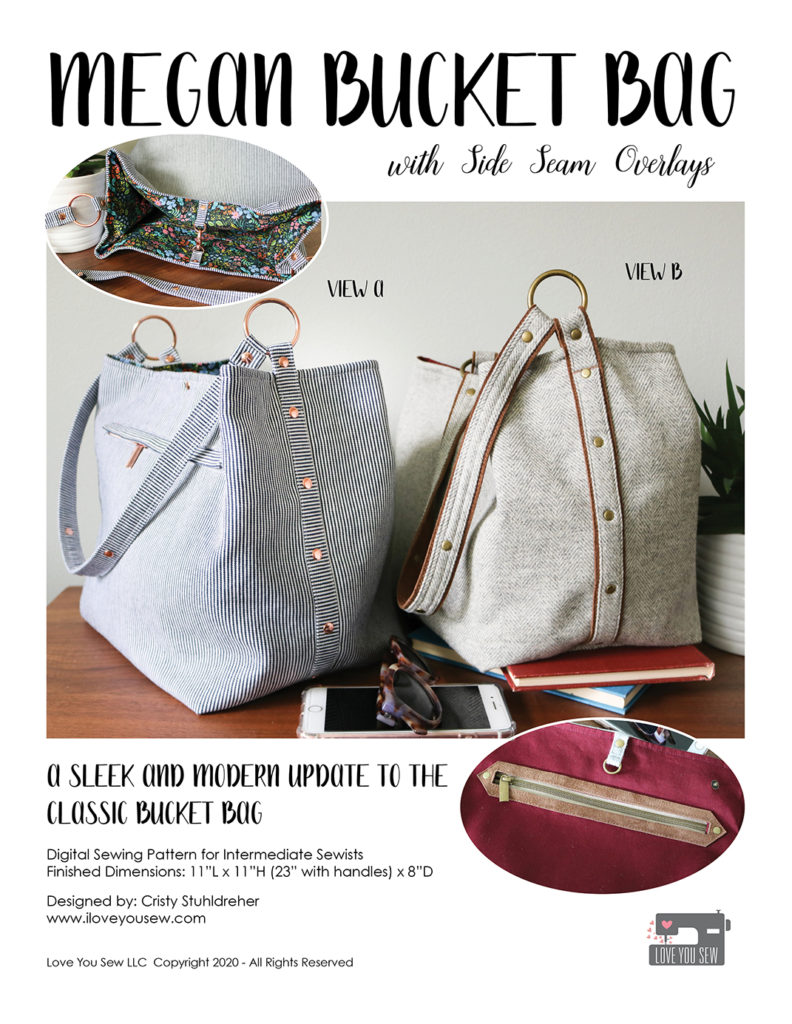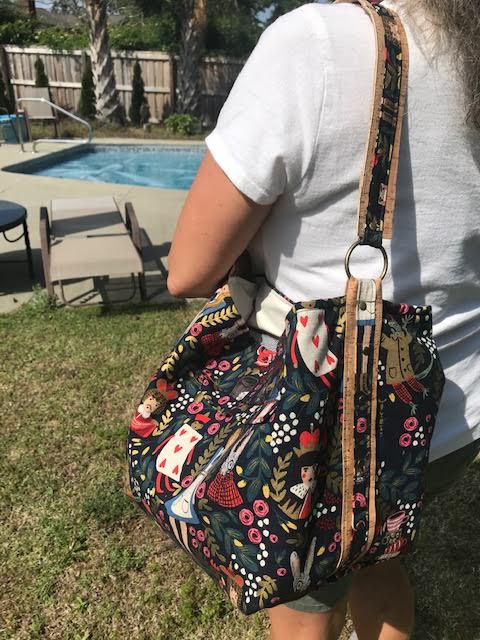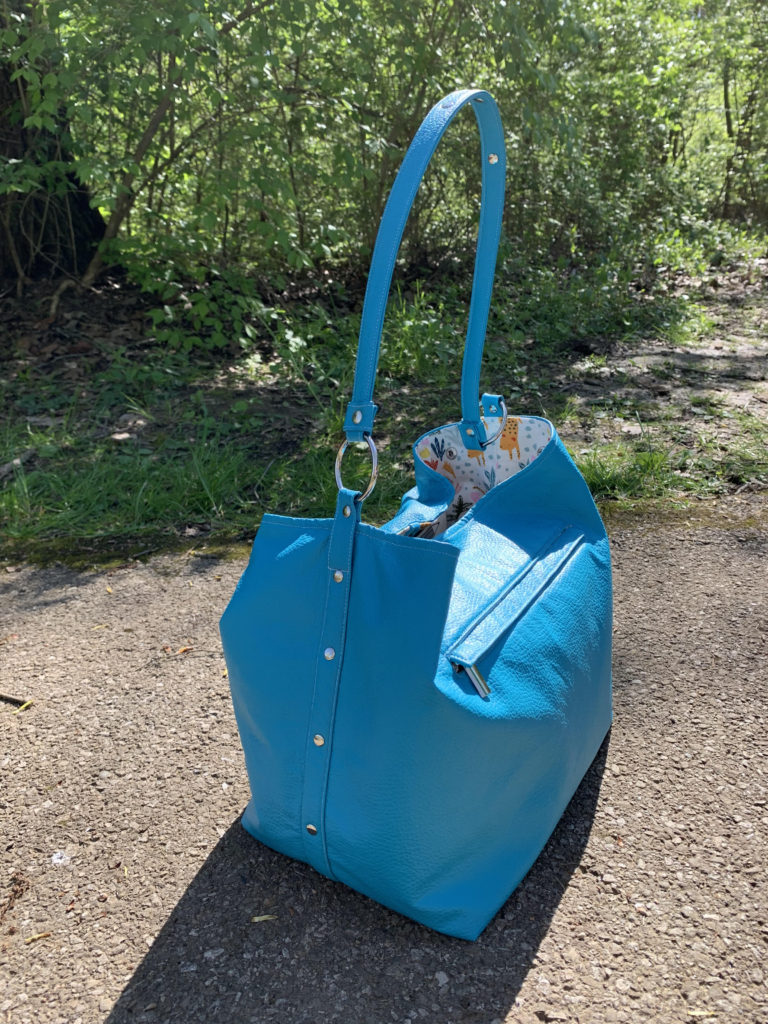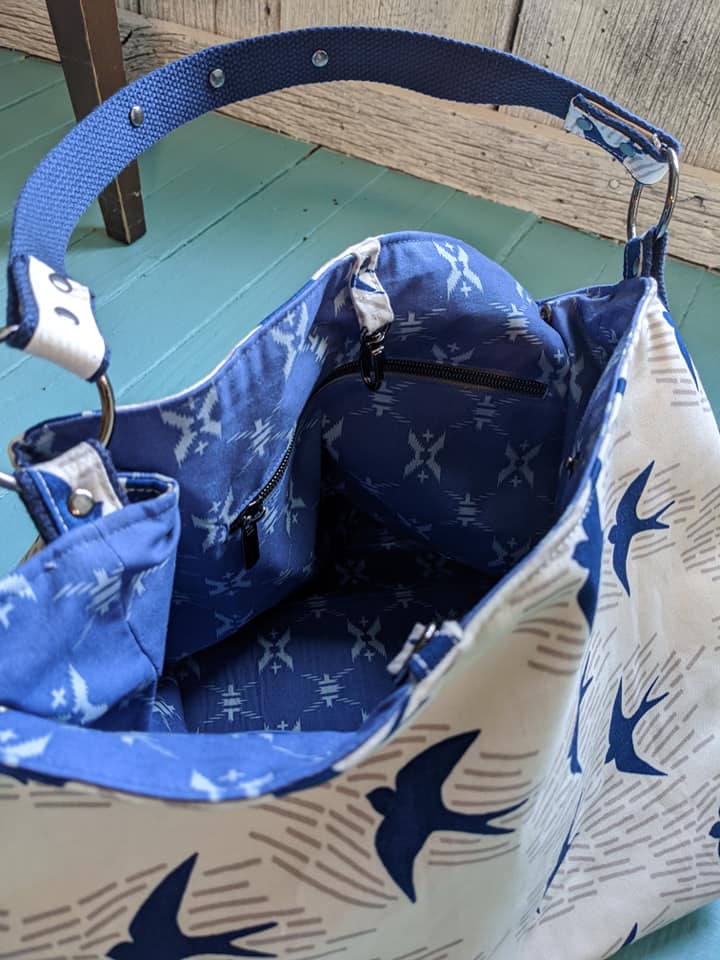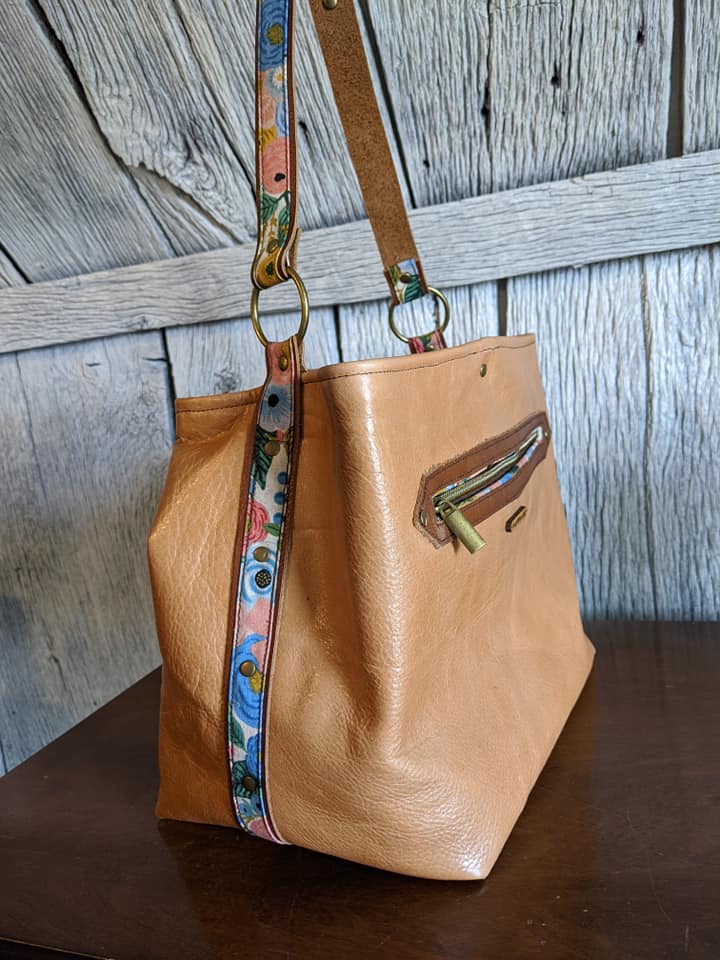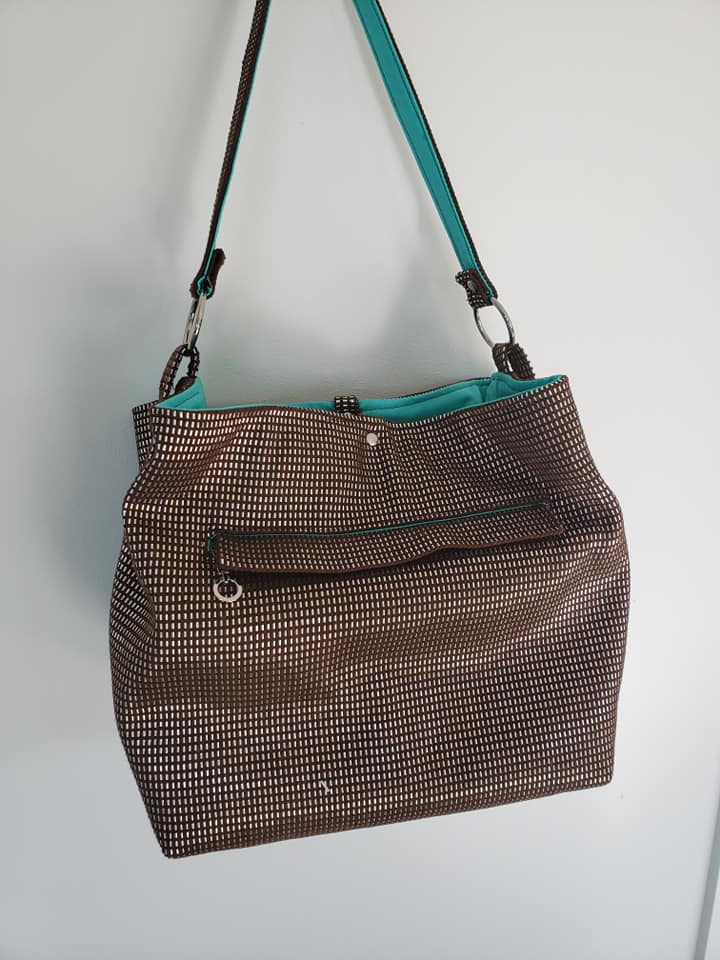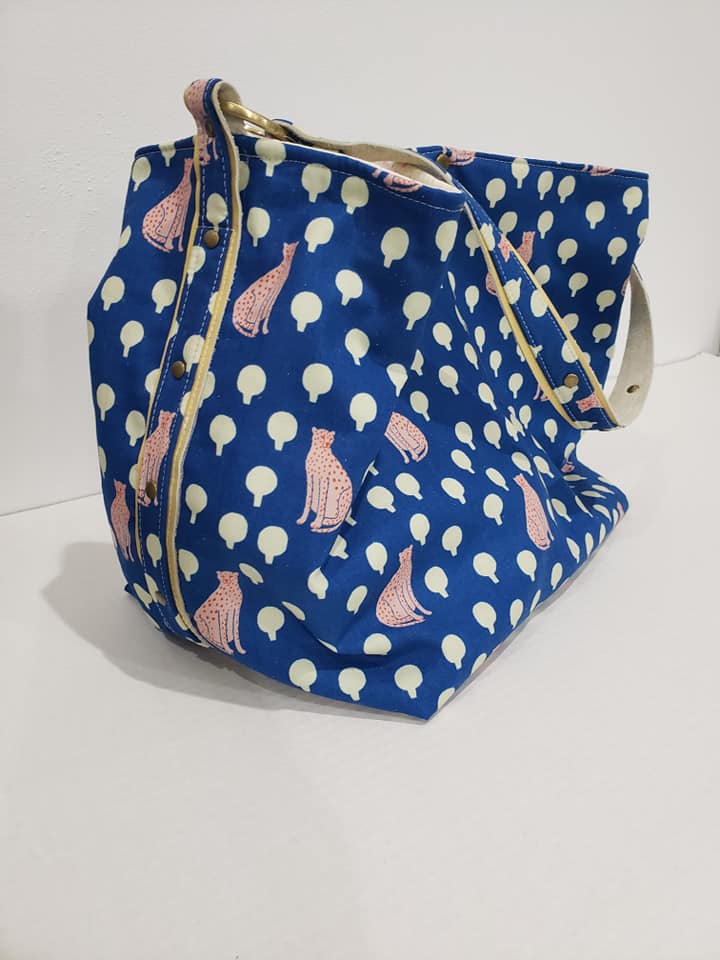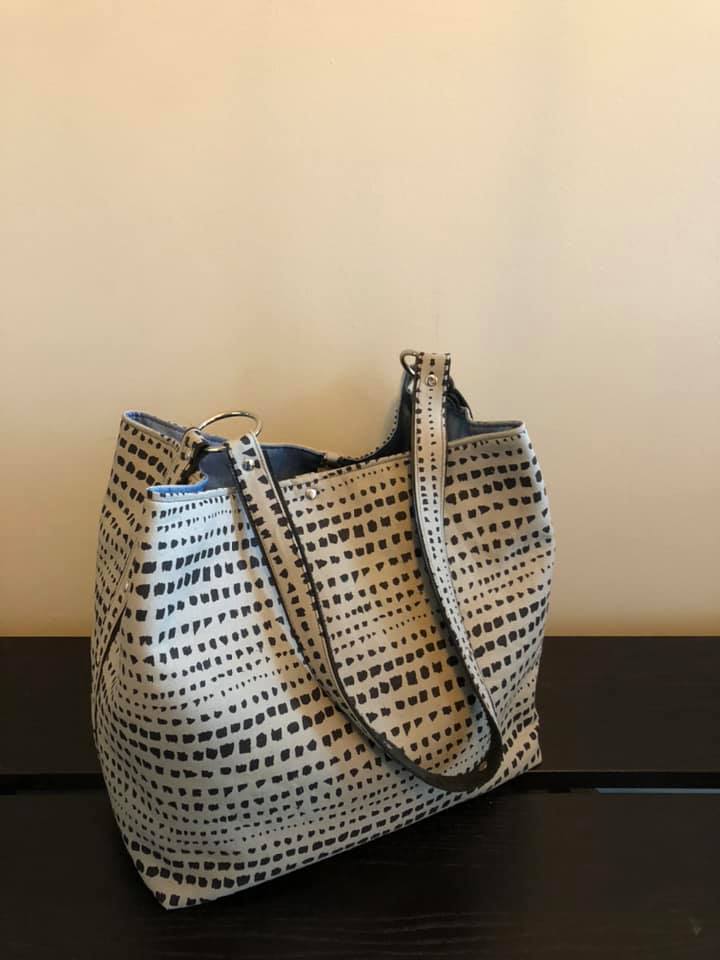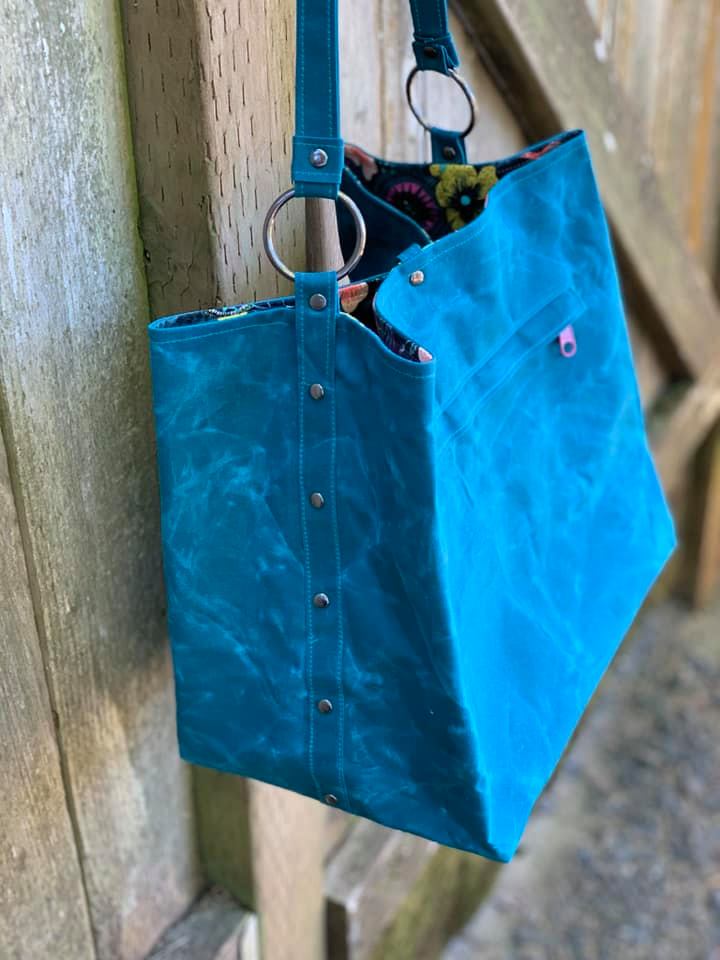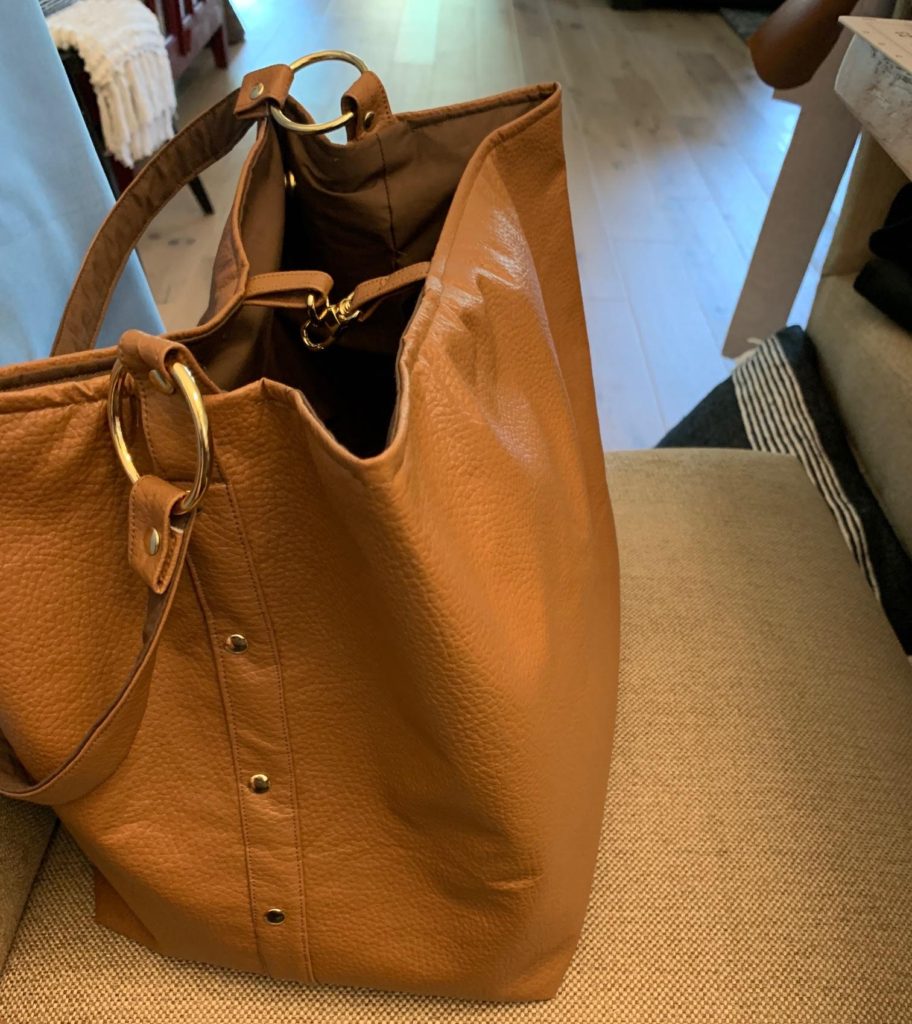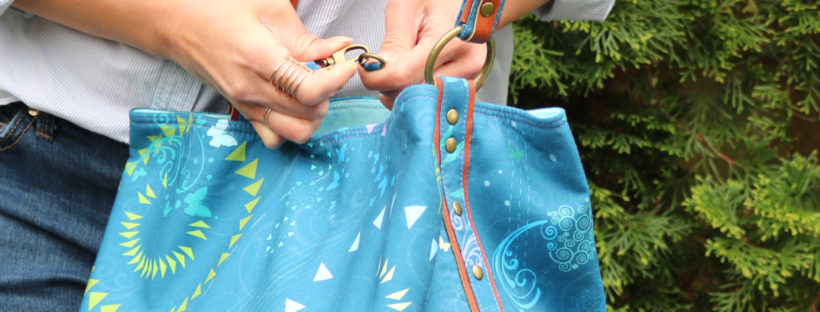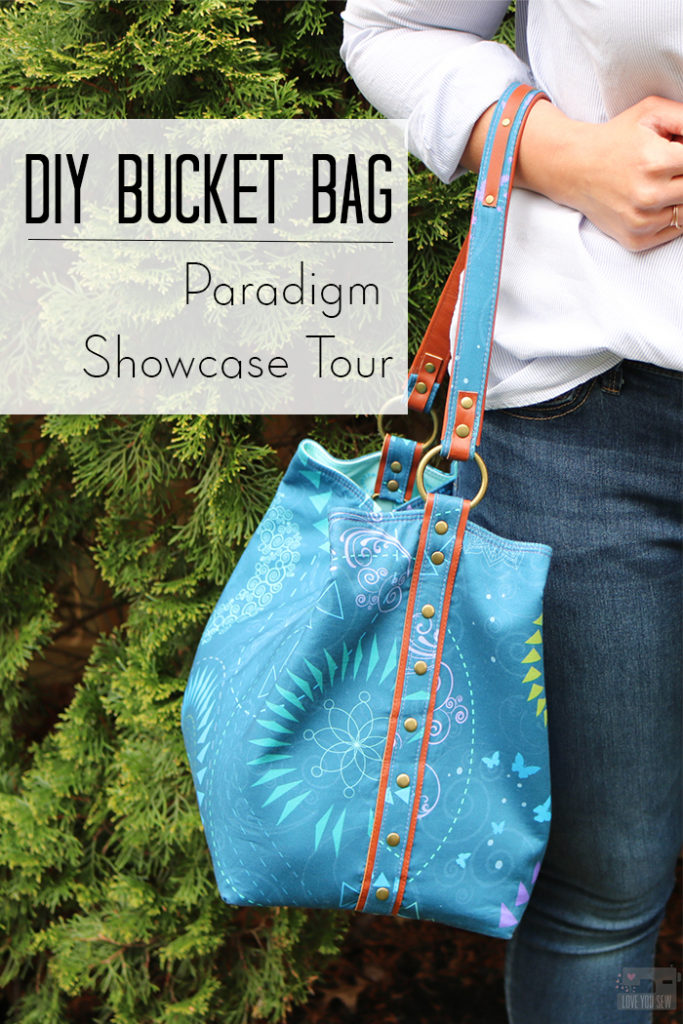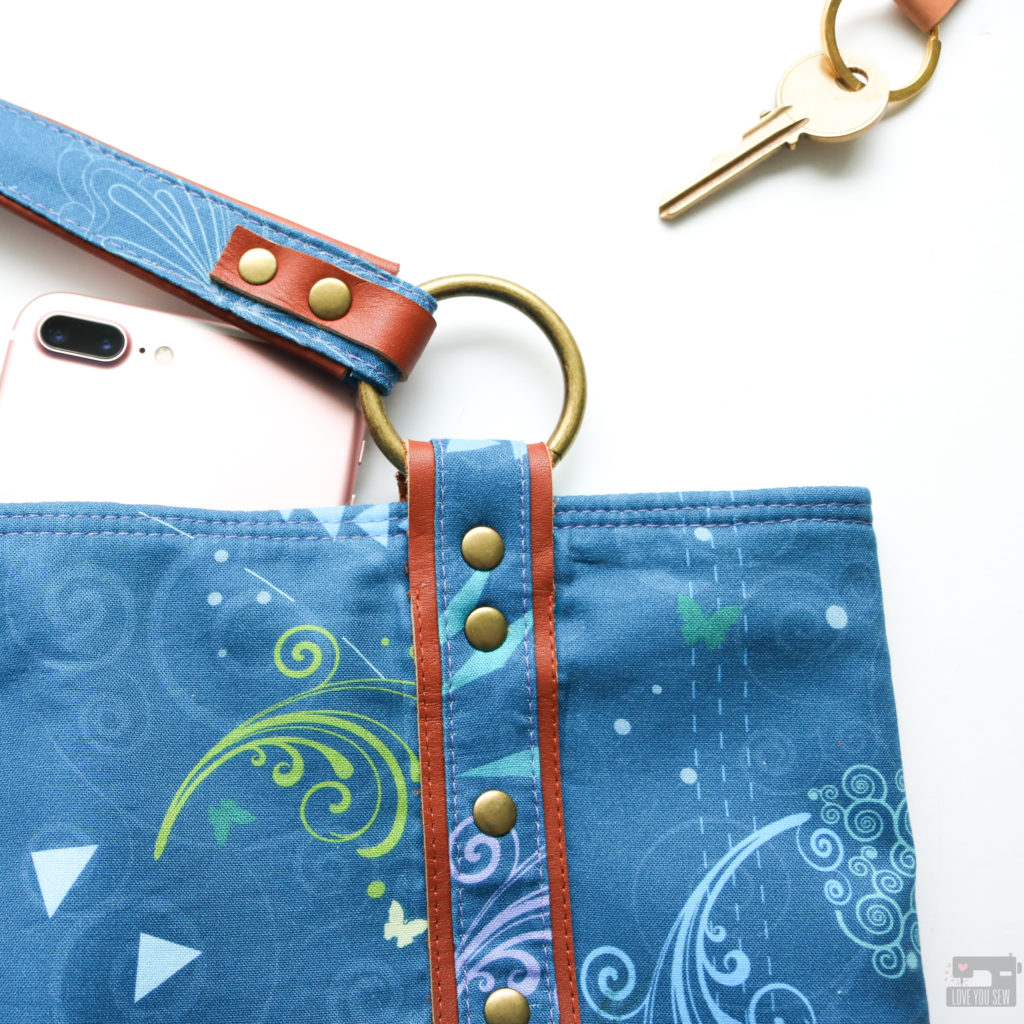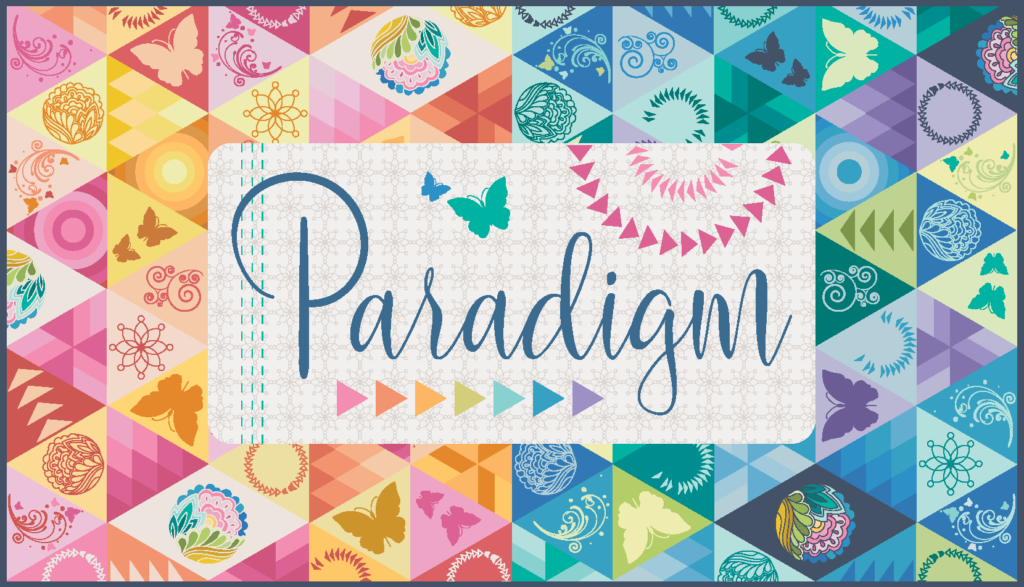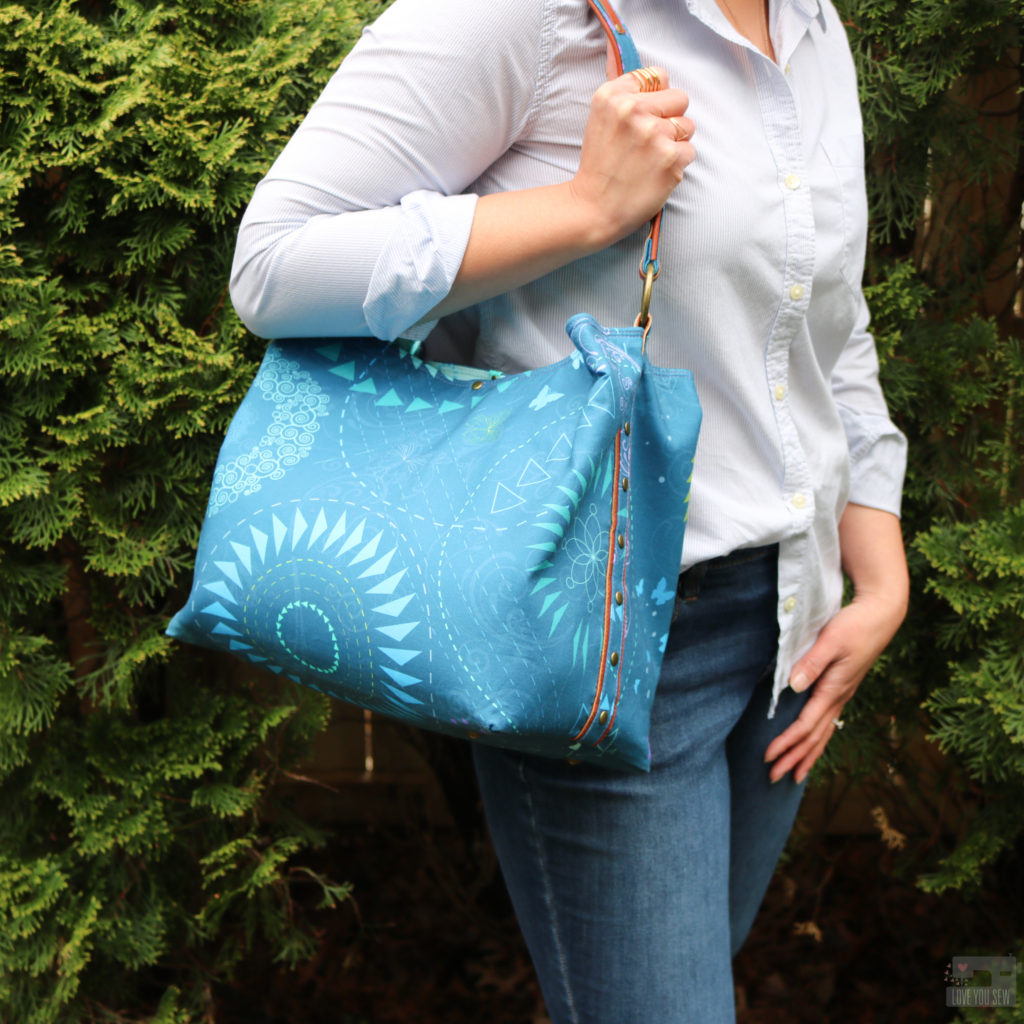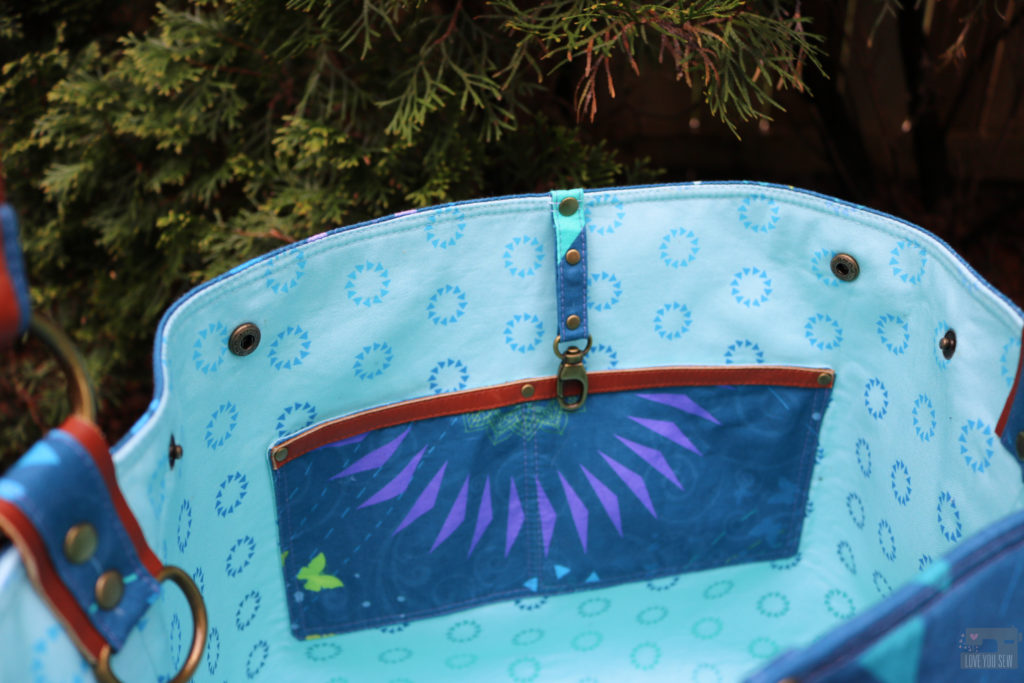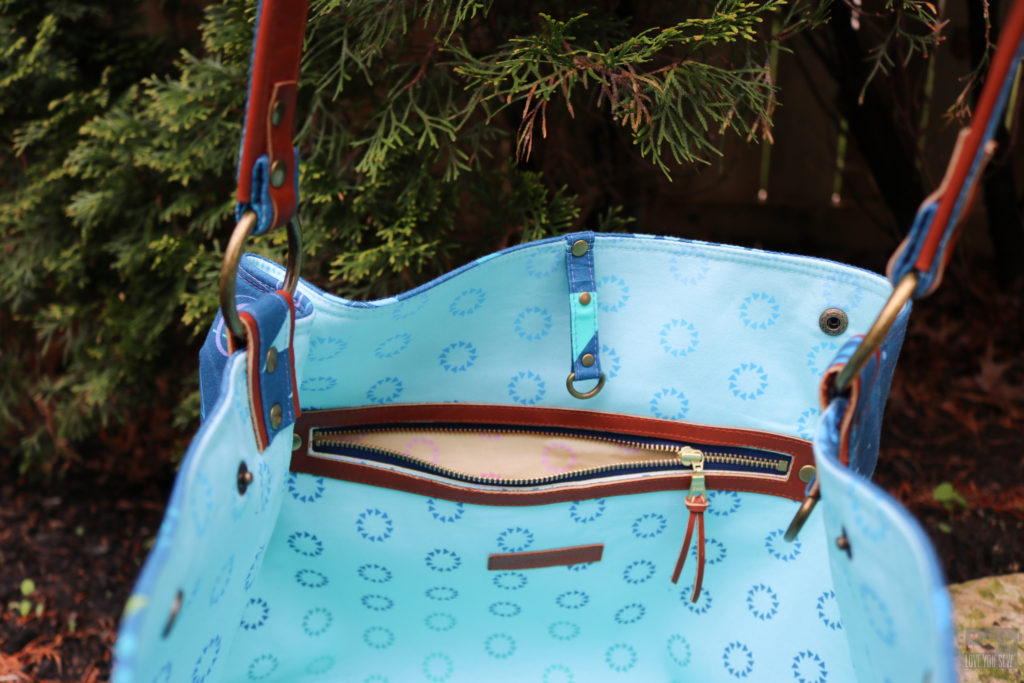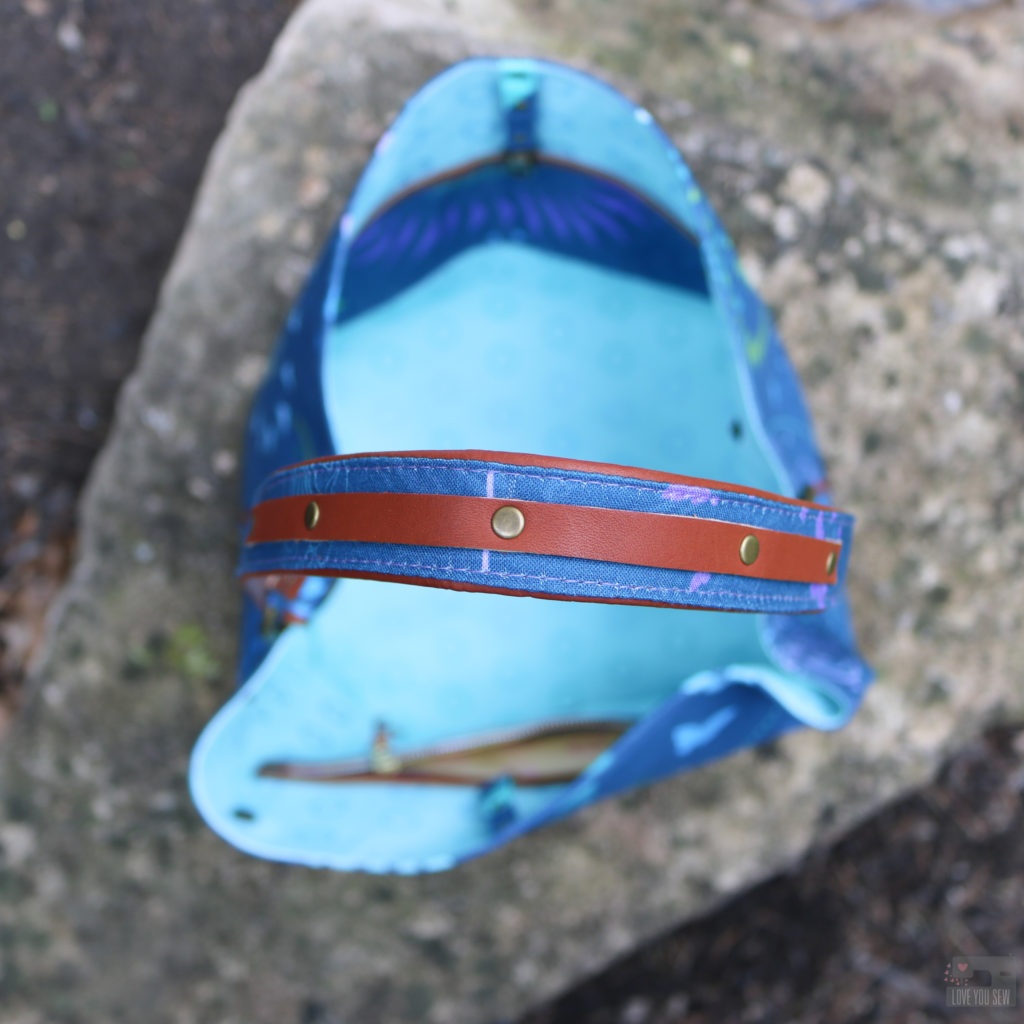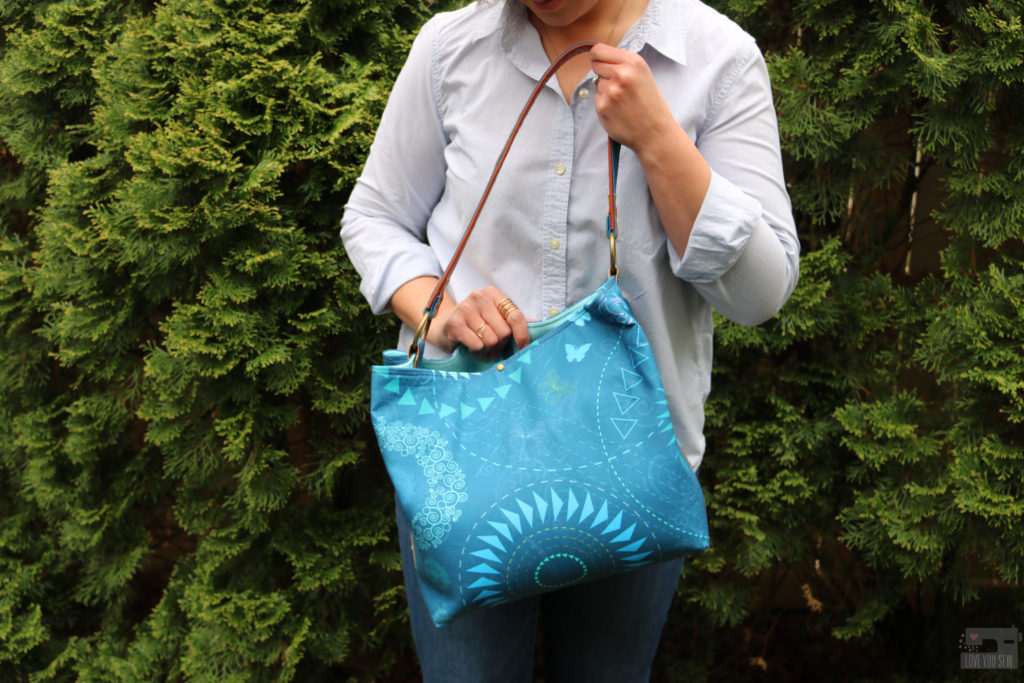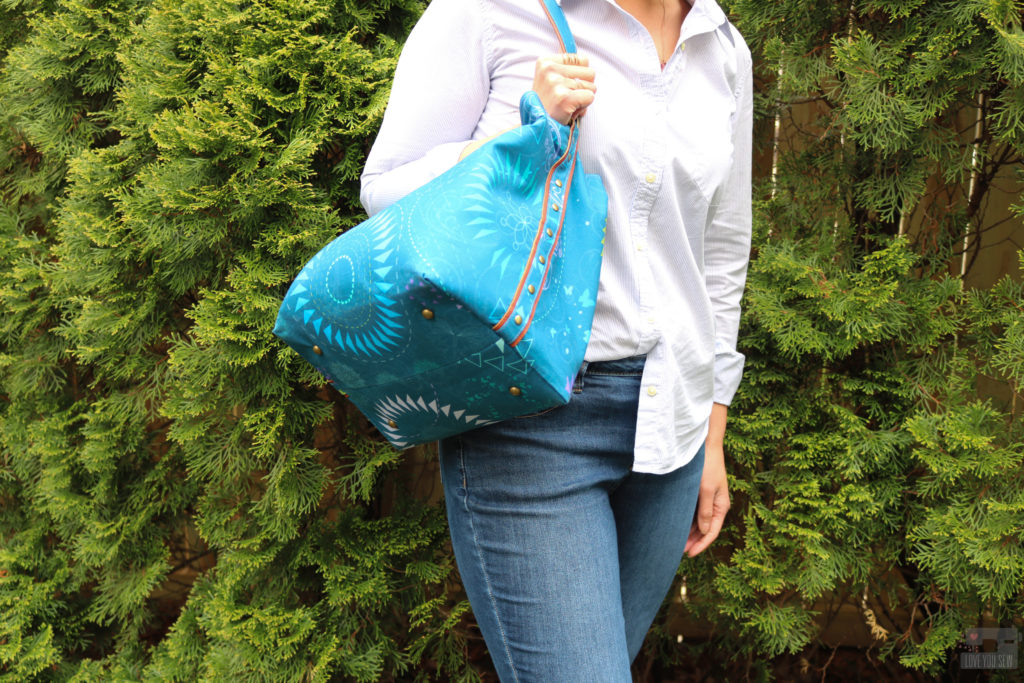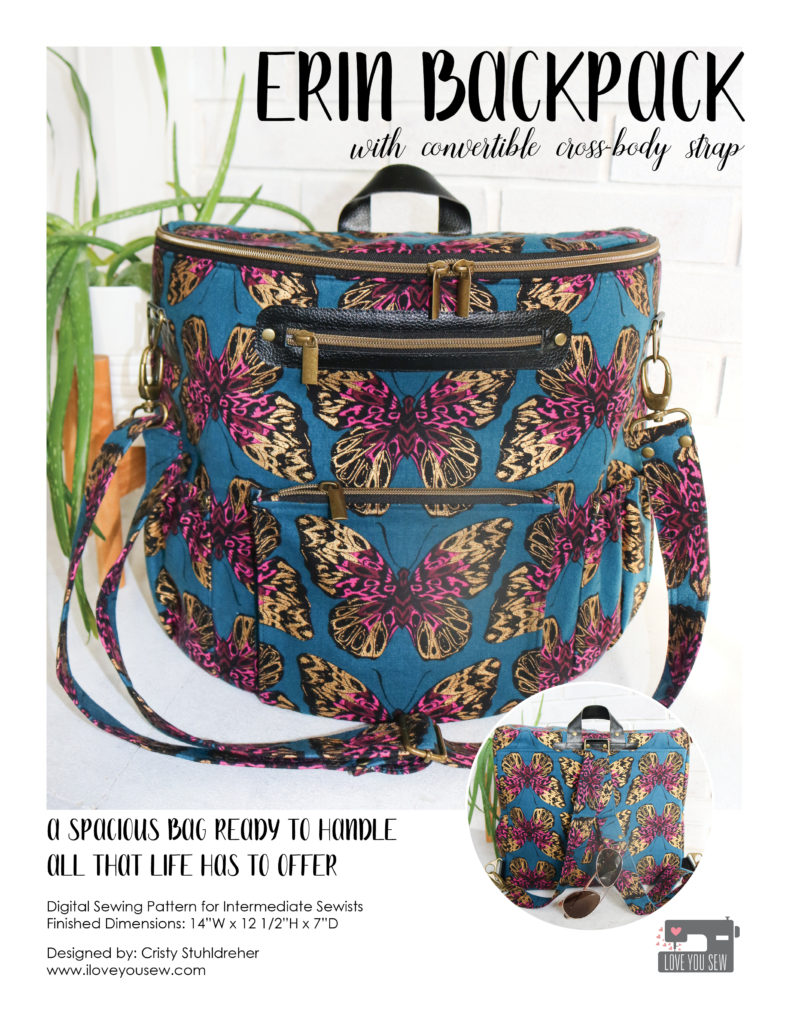
The Erin Backpack sewing pattern is here!!! This new S P A C I O U S bag is ready to be made out of your favorite sturdy fabrics. With a design full of pockets, Erin will be your perfect travel companion — whether for you or for the whole family! Wherever life takes you, the Erin Backpack will be ready! You can grab the digital pattern right here.
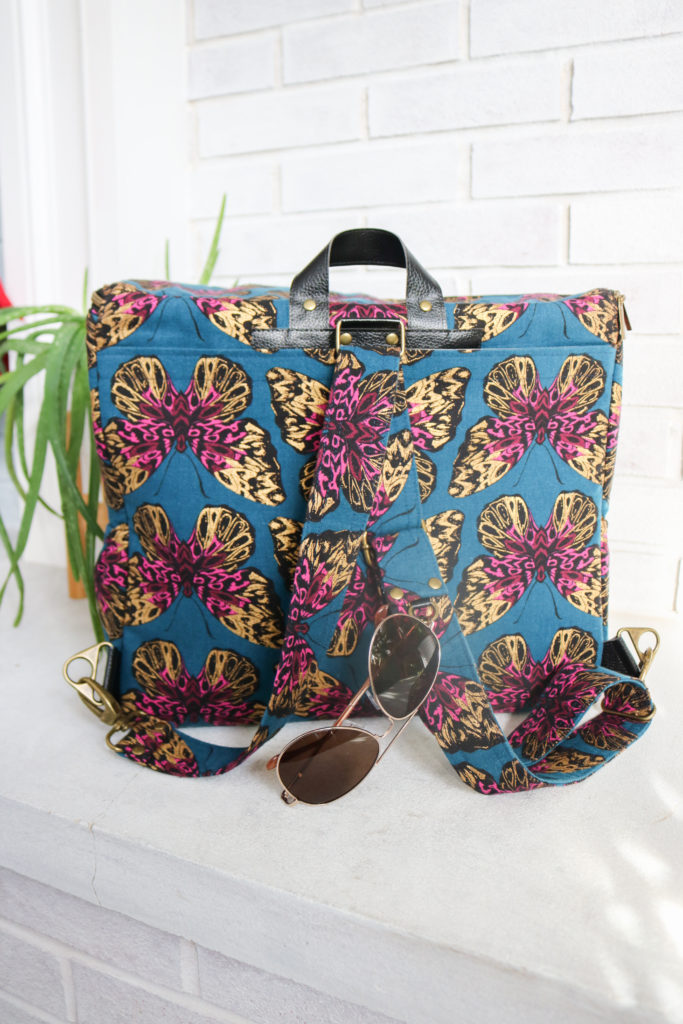
It’s been awhile since I’ve released a sewing pattern. ‘Just about a full year has passed by, but my excuse is — of course, 2020. With the pandemic, and social unrest of this country, I was left with very little motivation to design while so many people were suffering. Like many of you, my home life has been flipped upside down and it seems like we have a new normalcy rather than a return to 2019 type of “normal.”
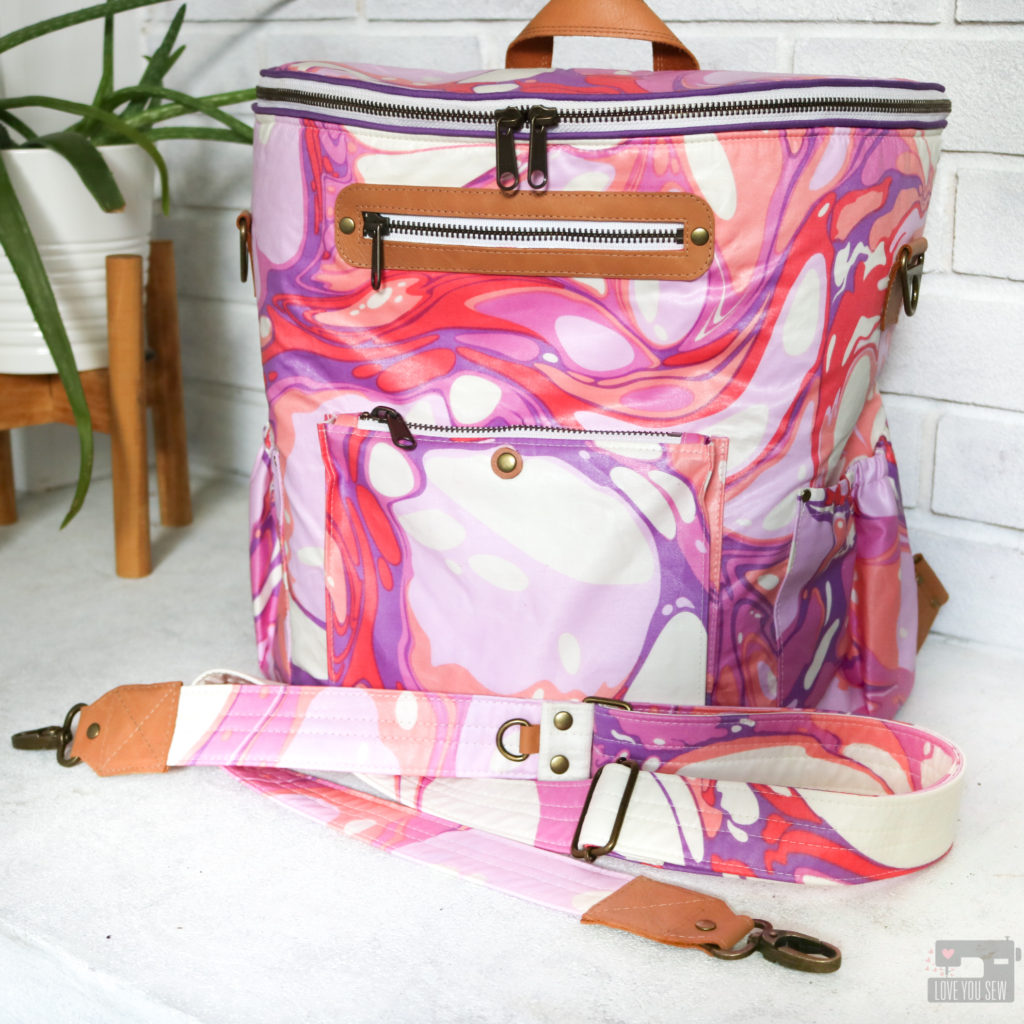
It’s taken me some time, but I got some motivation in the fall to make a prototype of the Erin thanks to the Sew Pink Blog Hop you can read here. Once I made that bag, I was feeling the flow and really wanted to ride the wave of bag-making and designing again!
Inspiration
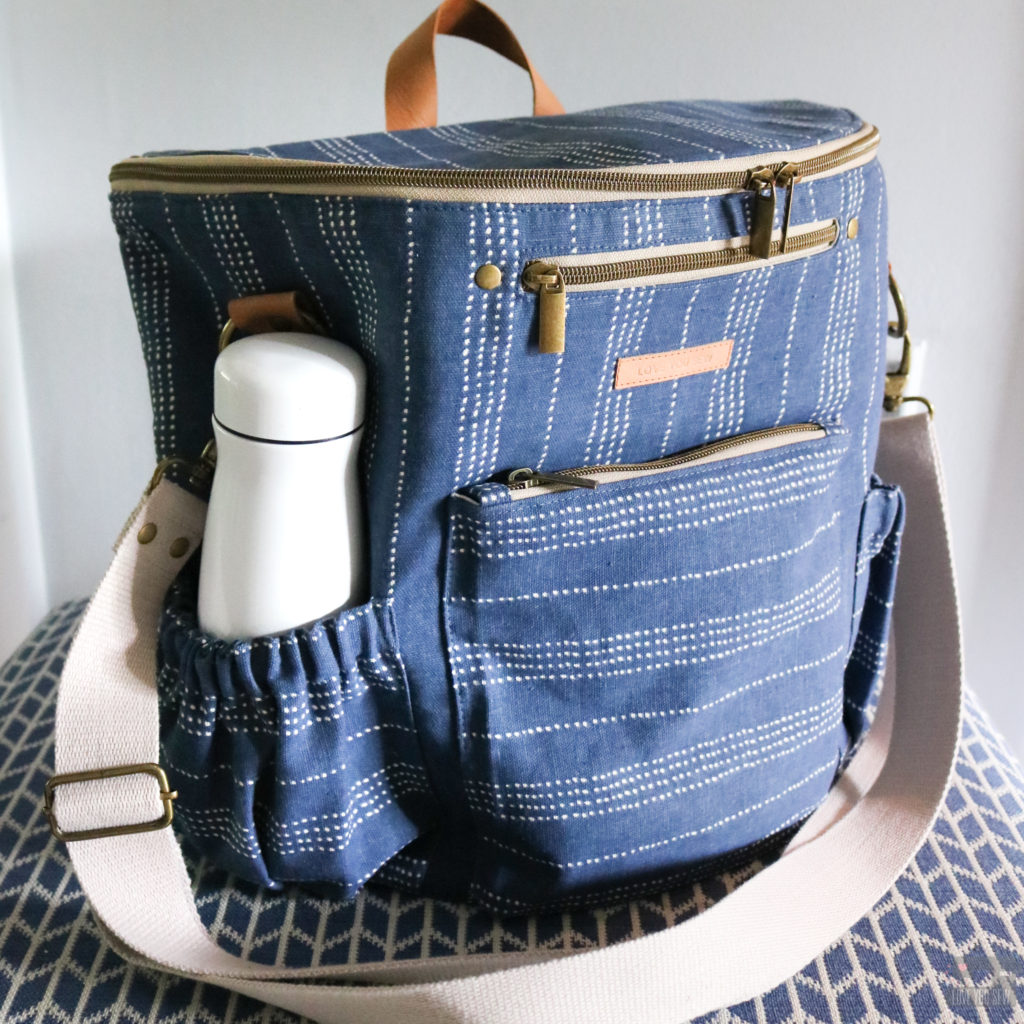
Original “Erin” Backpack
I made my first Erin (before it even had a name!) for my cousin over a year ago. She was looking for a large backpack for her growing family and wanted something unique and custom…with all the pockets, of course! This was right when 90s fanny packs were reemerging and that half-moon shape was really influencing bag trends. I wanted to test myself and see if I could design a backpack with that half-circle lid while stretching the body into a full-size backpack (since that style was missing out of my line-up.) And that’s how the Erin Backpack was born!
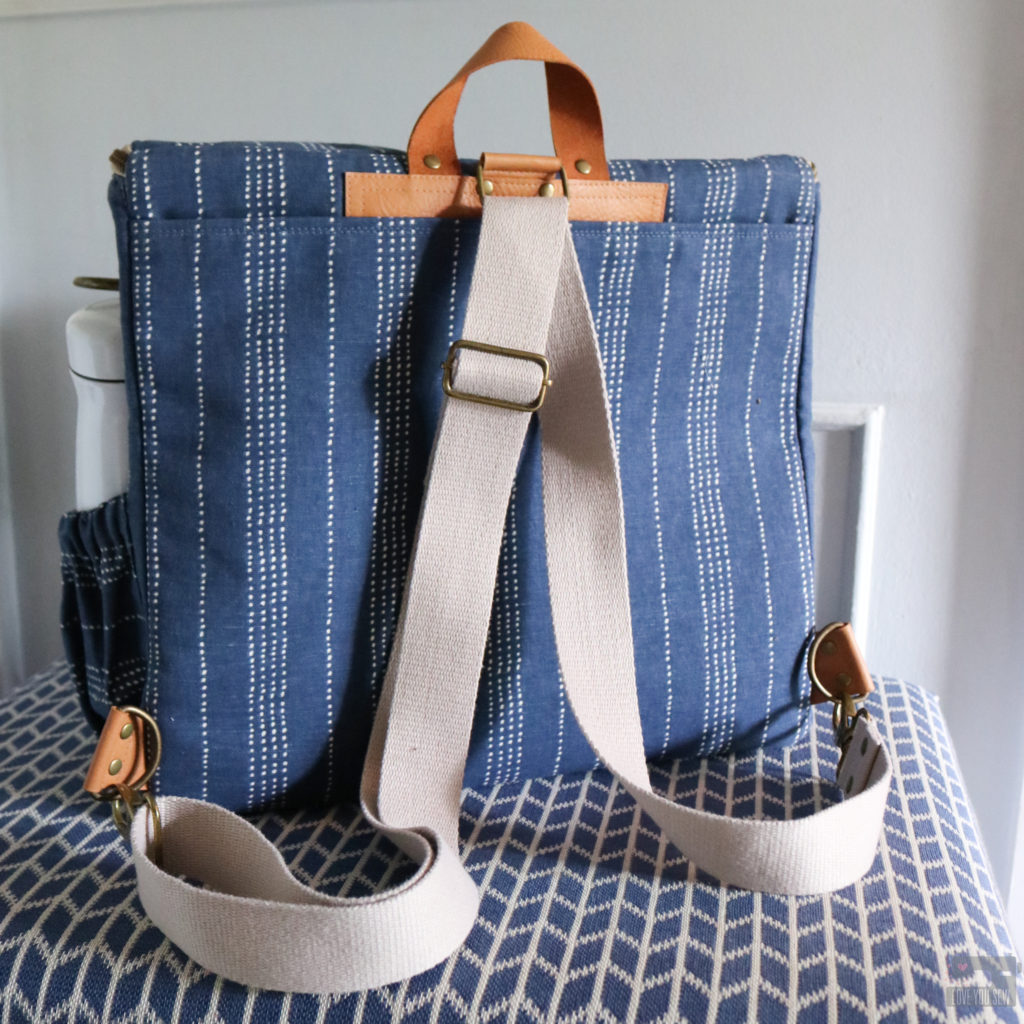
Swapped out the Strap for Heavy Duty Webbing
Namesake
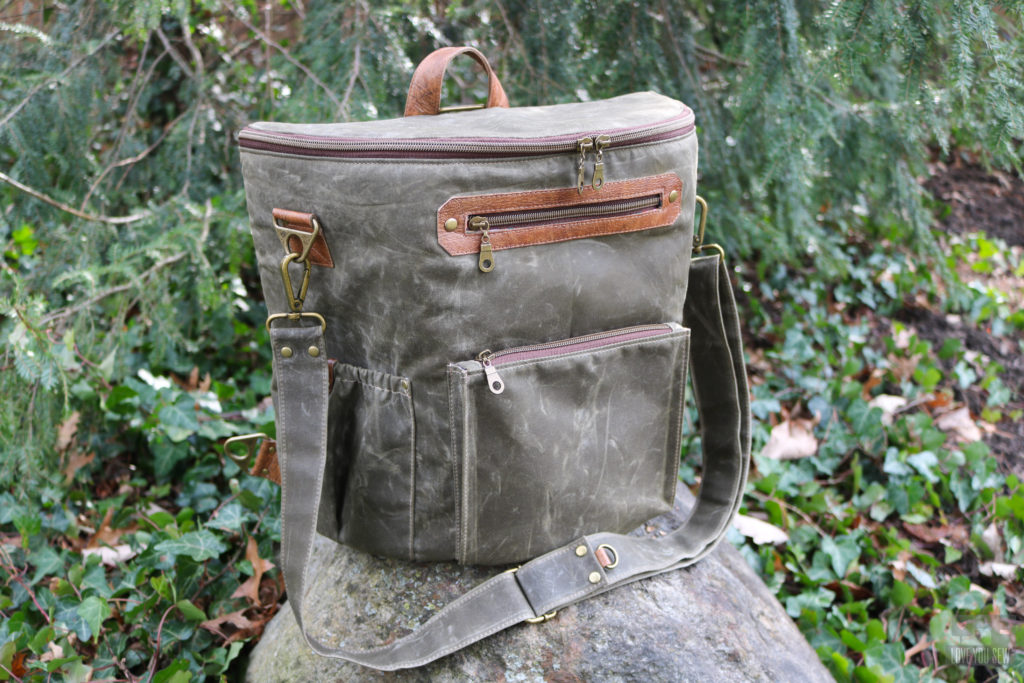
As many of you know I name all of my bags after my nieces. This bag is no exception. It is named after my incredibly sweet niece out in Oregon. One of my first memories was a camping trip to Cape Lookout on the coast. My husband and I were only married a few months and I really didn’t know this side of the family since they lived far away. Well, we had SUCH a great time out west and was welcomed with such open arms. This bag reminds me of our time on the coast — especially the waxed canvas version that definitely wants to be out on an adventurous hike with those HUGE northwest trees!
Sewing Level
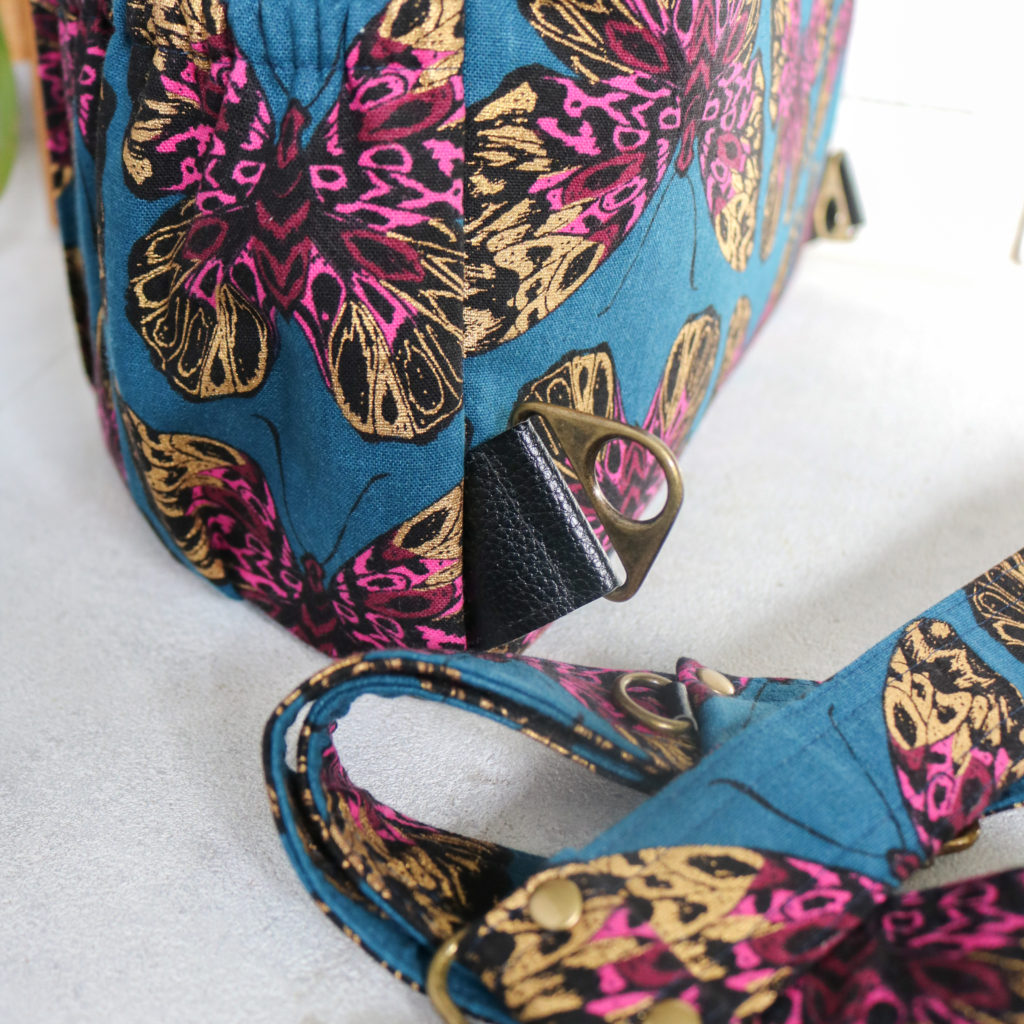
While the Erin Backpack is made for the everyday, the complexity of its construction leaves it for more intermediate sewists. With the half moon shape of the lid and base, the walls are attached with Y-seams. There is nothing to be scared of….Y-seams are just when 3 seams come together and do NOT form a right angle. However, when you throw in thicker bag layers, it can be tricky to wrangle the seams into place.
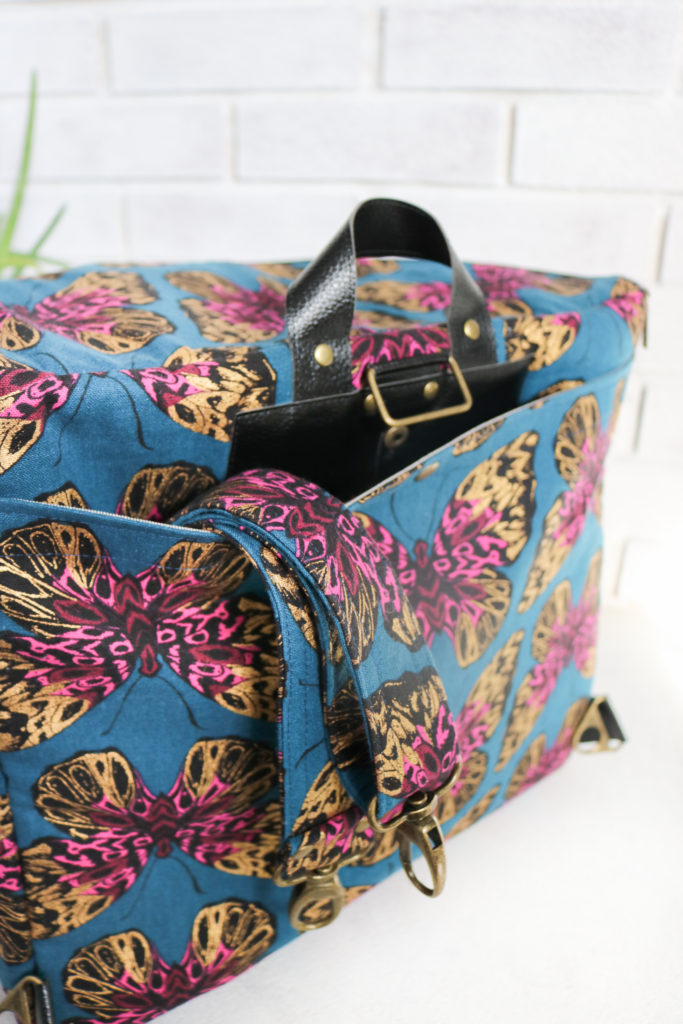
Also, the pattern calls for the use of leather, vinyl, or cork. These can be tricky substrates to use if you are not familiar. You can check out my Tips on Sewing Vinyl here, which have many of the same suggestions I would offer to leather and cork. But my main tips would be to:
- Use a Teflon or Walking foot to stop the presser foot from sticking to the fabric.
- Make sure you have some heavy duty needles, sizes 14-18, handy to handle the layers
- Increase your stitch-length as you work through thicker layers – Hand crank if needed
- Use washi or scotch tape under your Zipper foot to prevent sticking
- If sticking continues, you can also place tissue paper in between the leather and your presser foot
Bag Features
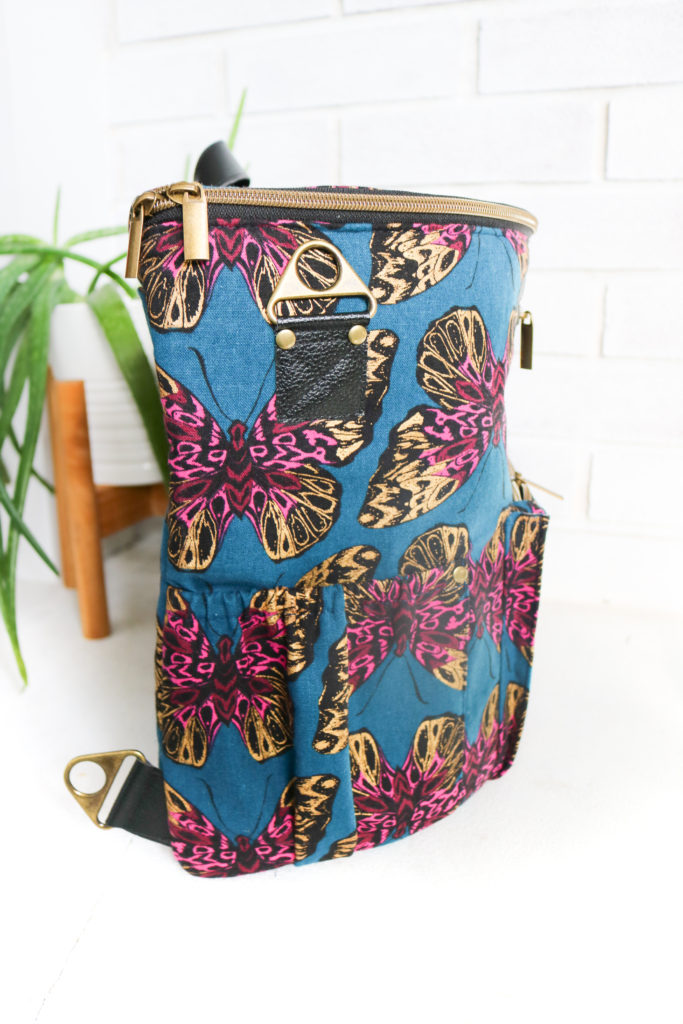
- Body – A distinctive half cylinder shape that melts into the body and is spacious enough to use as overnight travel backpack or even a diaper bag!
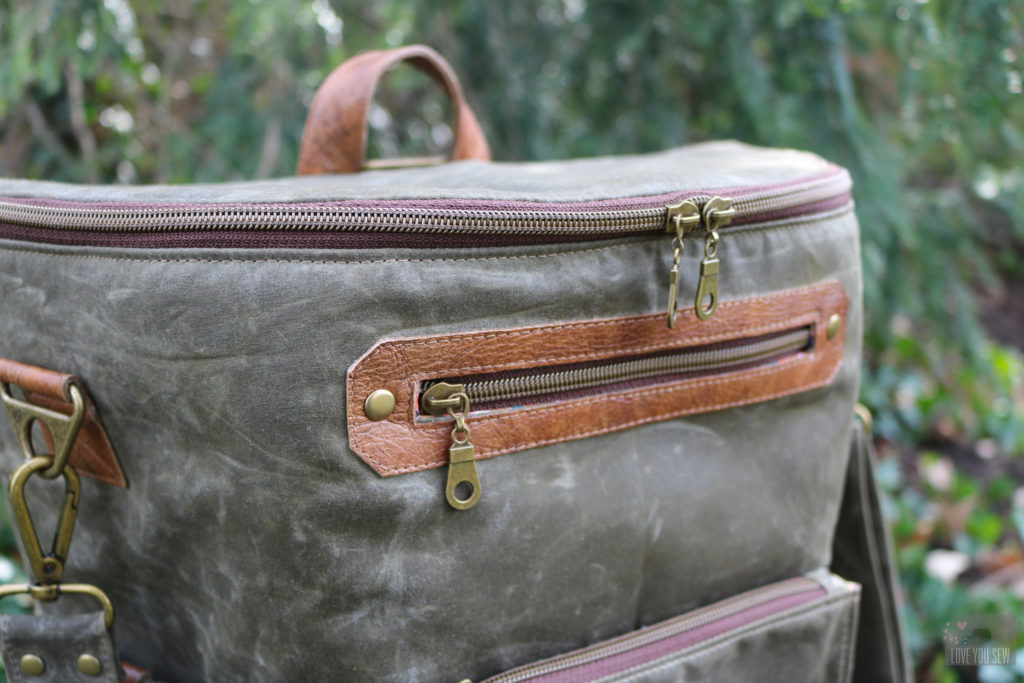
- Zippered Main Compartment – Everything remains safe while accessible with a large opening. The lid can fold back allowing you to see almost everything inside. It’s perfect for staying organized!
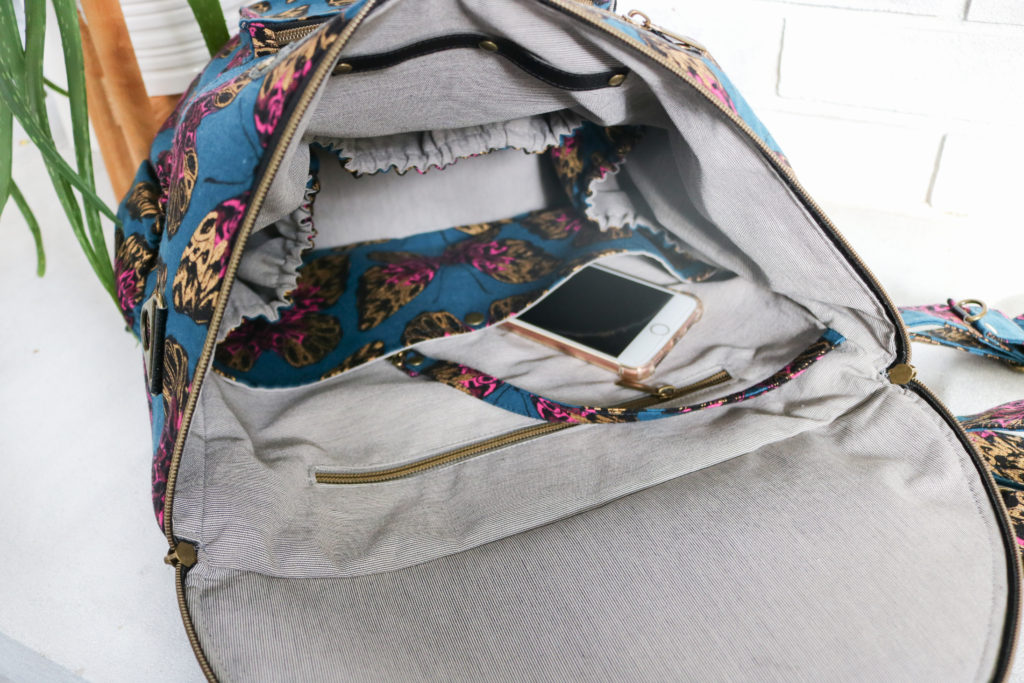
- 10…yes, 10 pockets! – With Zippers, elastic, snap and slip pockets, your bases are covered!
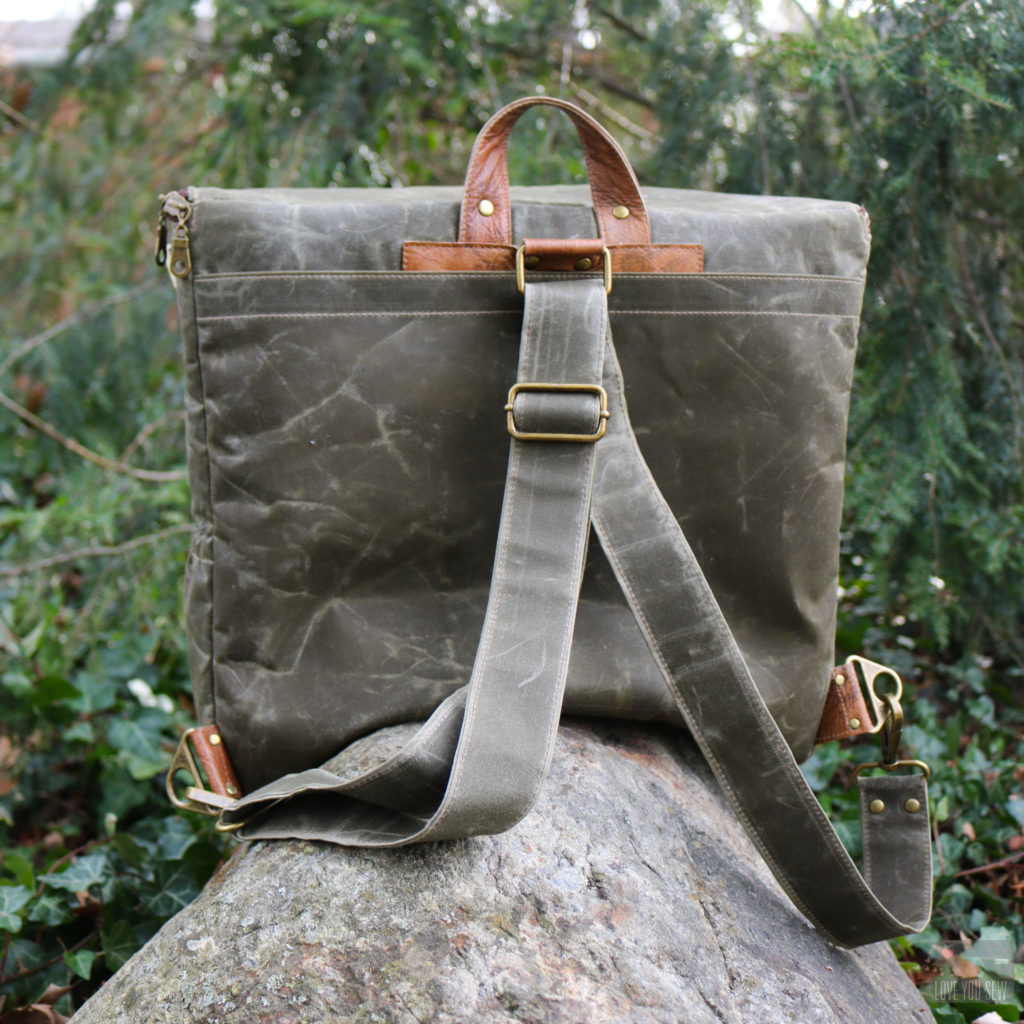
- Converts from a Backpack to a Shoulder Bag – By switching the swivel clasps from the rear to the front and releasing it from the back rectangle ring, you have a new bag!
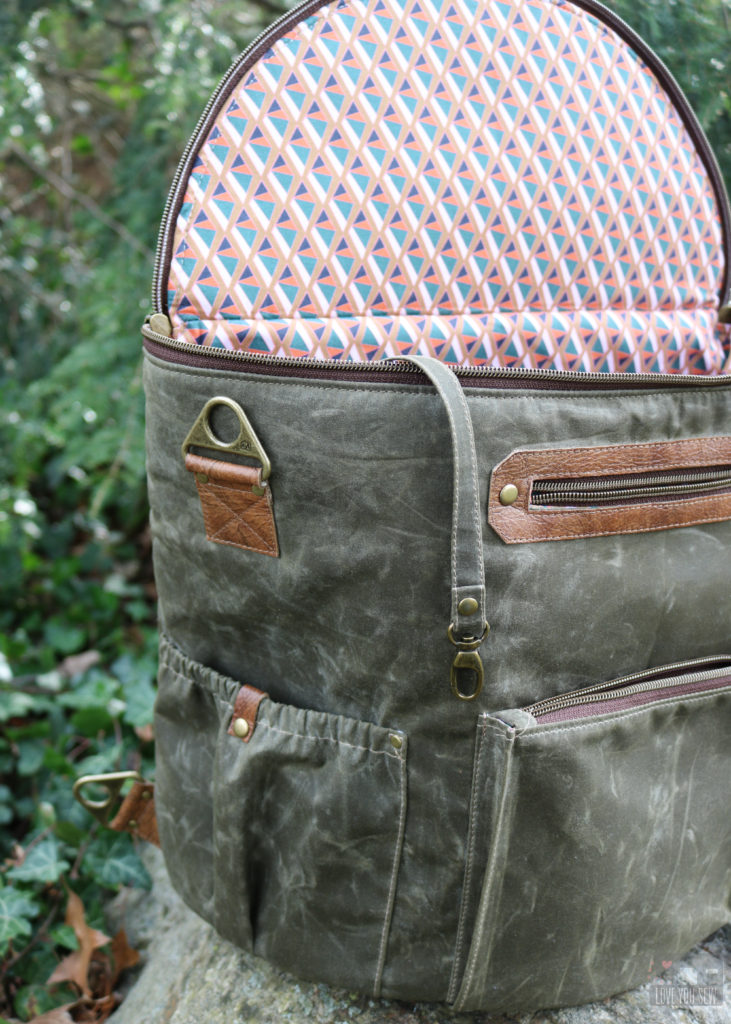
While not a part of the pattern, I added these leather accents to the elastic pockets with the scrap from the zipper plate.
- Key Fob – I always love this feature to find your keys – especially in a very roomy bag!
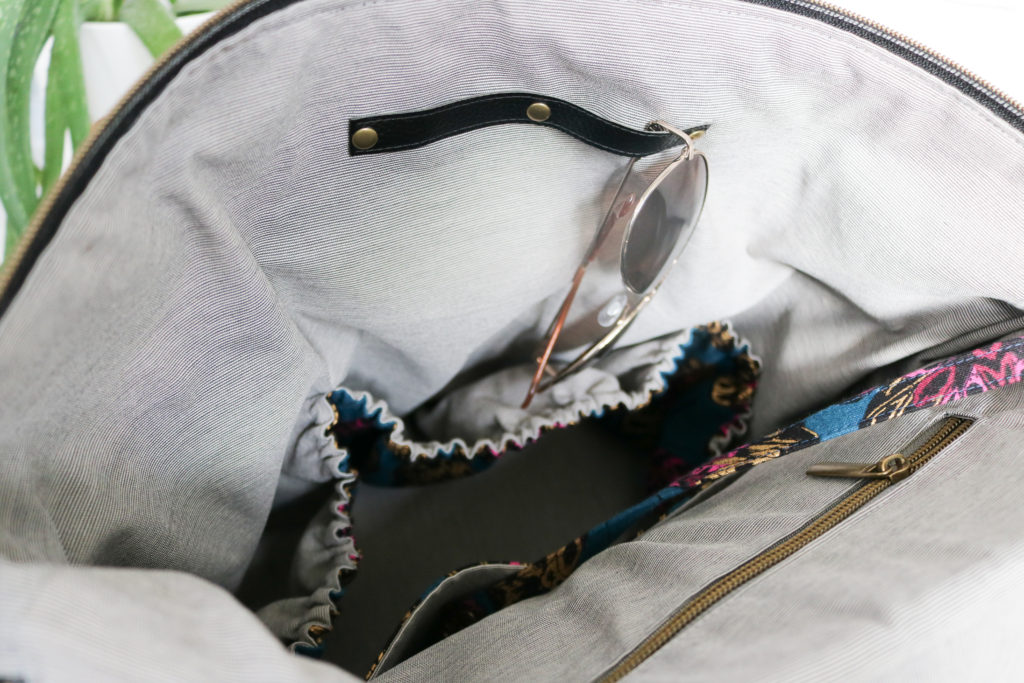
- Accessory Strap – This is another simple feature that can be used to hold sunglasses, a pen or a place to wrap your sanitizer onto. I love the way it visually breaks up the space along the lining as well!
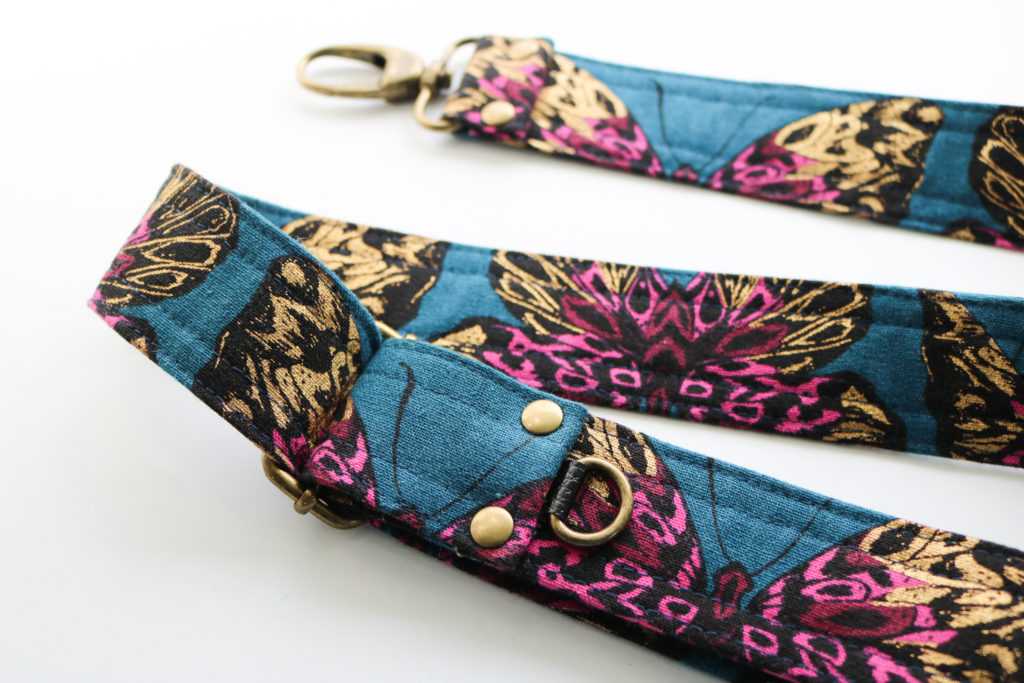
- Adjustable Strap with D-Ring – To be a convertible bag, you need a long adjustable strap. The pattern calls for a 60″ long strap, but does have instructions for piecing a longer one together (if needed.) With the popularity of wireless ear pods, I’ve been seeing this D-Ring feature on all the high-end designer bags. It’s another simple feature to include, but can be so helpful as you are traveling. Check out how to make The Tiny Sophia Bag to hold your ear pod case.
Hardware
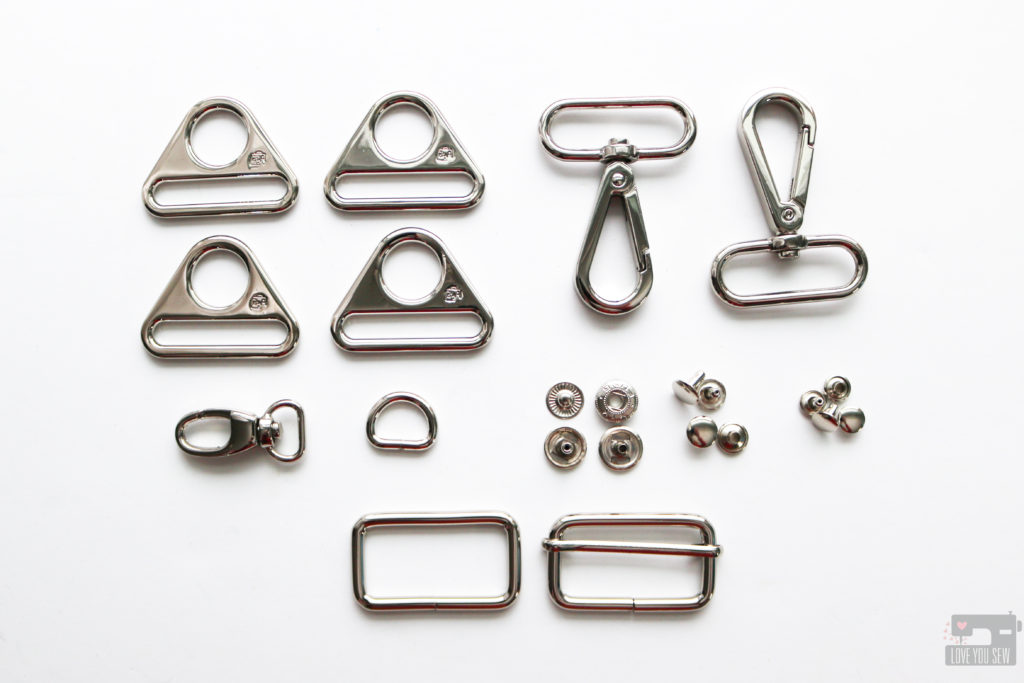
With all of the options in the Erin Backpack, comes quite a bit of Hardware. I’m a big fan of rivets for their professional finish and have added snaps into the mix as well. If you don’t want to source your own, I’ve found high quality options which you can grab a in my shop!
The kit includes:
(4) 1 1/2″ Triangle Rings
(2) 1 1/2″ Swivel Clasps
(1) 1 1/2″ Rectangle Ring
(1) 1 1/2″ Strap Slider
(1) 1/2″ Swivel Clasp
(1) 1/2″ D-Ring
(3) Sets of 12.5 mm Double-Cap Spring Snaps
(5) Sets of Medium Double-Cap Rivets (9mm cap x 8mm post)
(20) Sets of Small Double-Cap Rivets (8mm cap x 6mm post)
The sewing pattern does NOT include instructions for hardware installation or the setting tools.
- Rivets – But you can check out my Rivet Installation by Hand video here and I recommend this rivet setting tool by Tandy (if you want to hand set them.)
- Spring Snaps – You can check Snap installation at the 30 second mark in this Instagram video for help. For the snaps, I recommend this tool which is used in the video. It comes with a few sizes, but 633 would handle the snaps in my hardware kit.
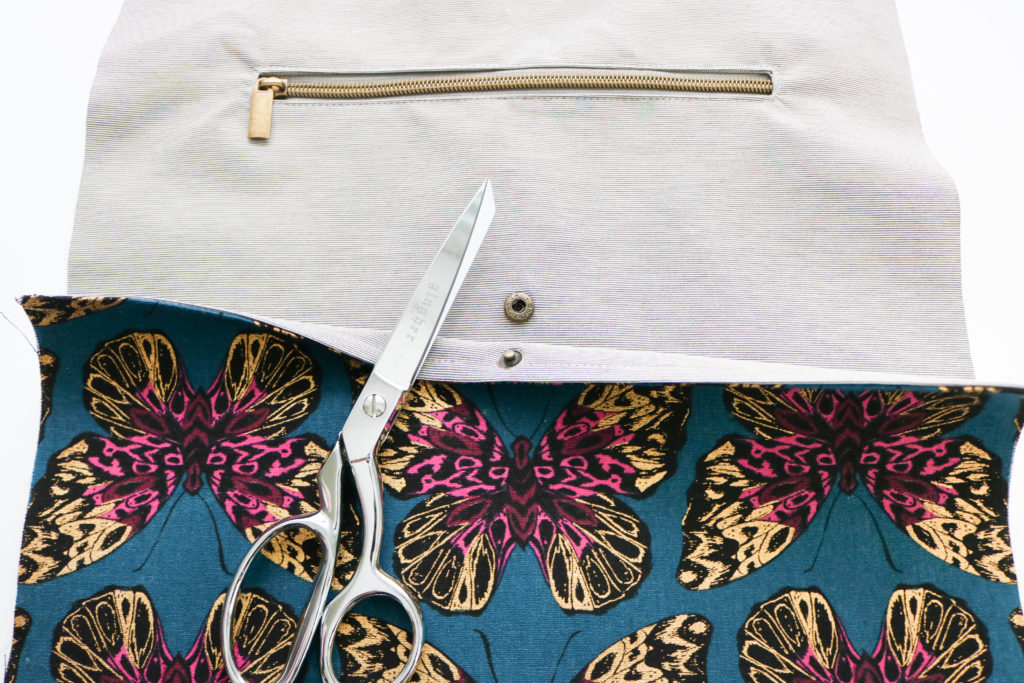
Featured Bags
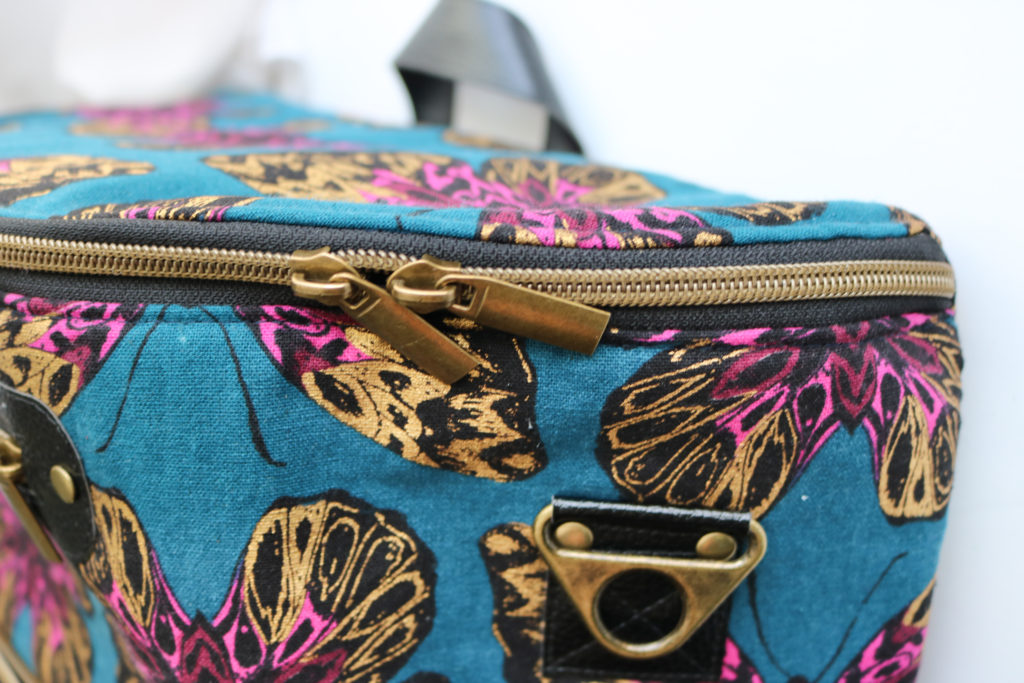
BUTTERFLIES –
- Main Fabric : Ruby Star Society Tiger Fly Canvas
- Lining: Mystery Polyester Railroad fabric leftover from a skirt
- Accent Fabric: Faux Leather from Sew Sweetness
- Zippers: Antique Brass Coil on Black Tape from Emmaline Bags
- Hardware: Triangle Rings from By Annie’s and the rest from Emmaline Bags (same as the kit for sale)
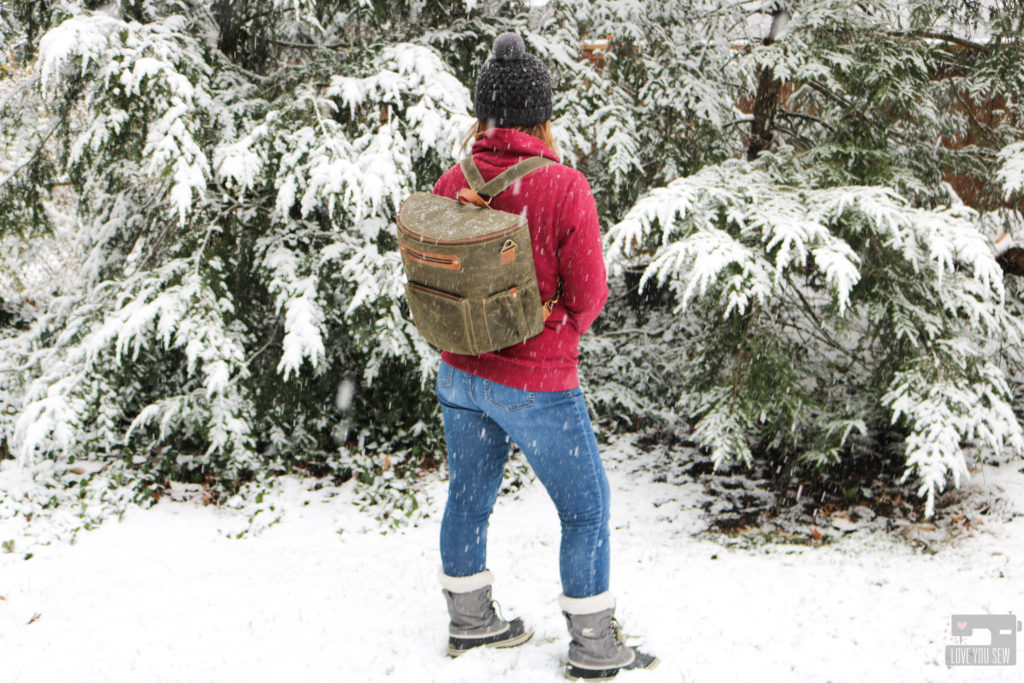
OLIVE –
- Main Fabric : Robert Kaufman Waxed Canvas from Sew to Speak. You can also find it here.
- Lining: Mystery Polyester Railroad fabric leftover from a skirt
- Accent Fabric: Thrifted leather (same as from my beloved quilted duffle bag.)
- Zippers: Metal look nylon Bronze with Chocolate tape from My Handmade Space (get on the mailing list for lots of great coupons!)
- Hardware: Triangle Rings from By Annie’s and the rest from Emmaline Bags (same as the kit for sale)
MANY THANKS
As always, I thank all of you for encouraging me to publish my patterns! This, by far, is my longest and most complicated bag pattern to date. I like to challenge myself to more intermediate and advanced sewing and I know many of you are the same. But my group of testers from all different bag-making levels were able to nail this bag. (I’ll be showing off their makes in another blog post!) Their help was absolutely instrumental in clarifying steps and adding in more information to help you along. I hope you enjoy the #ErinBackpack!
Watch out for a sew-along in the next few months! 😉
Hugs and Stitches,
Cristy
This post may contain affiliate links. Please read my full disclosures, here.
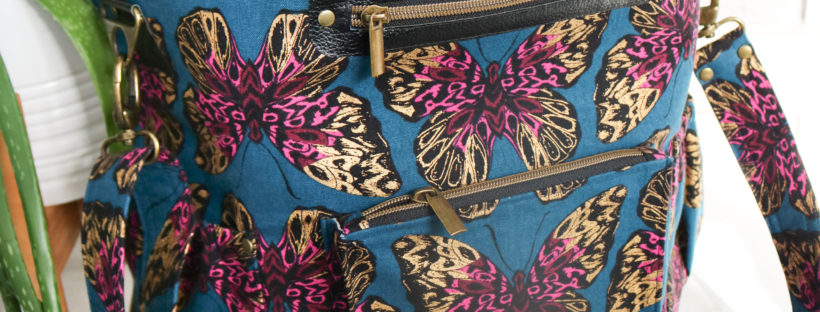
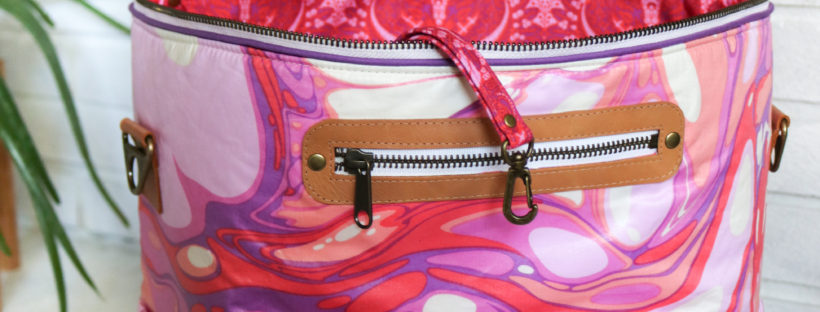
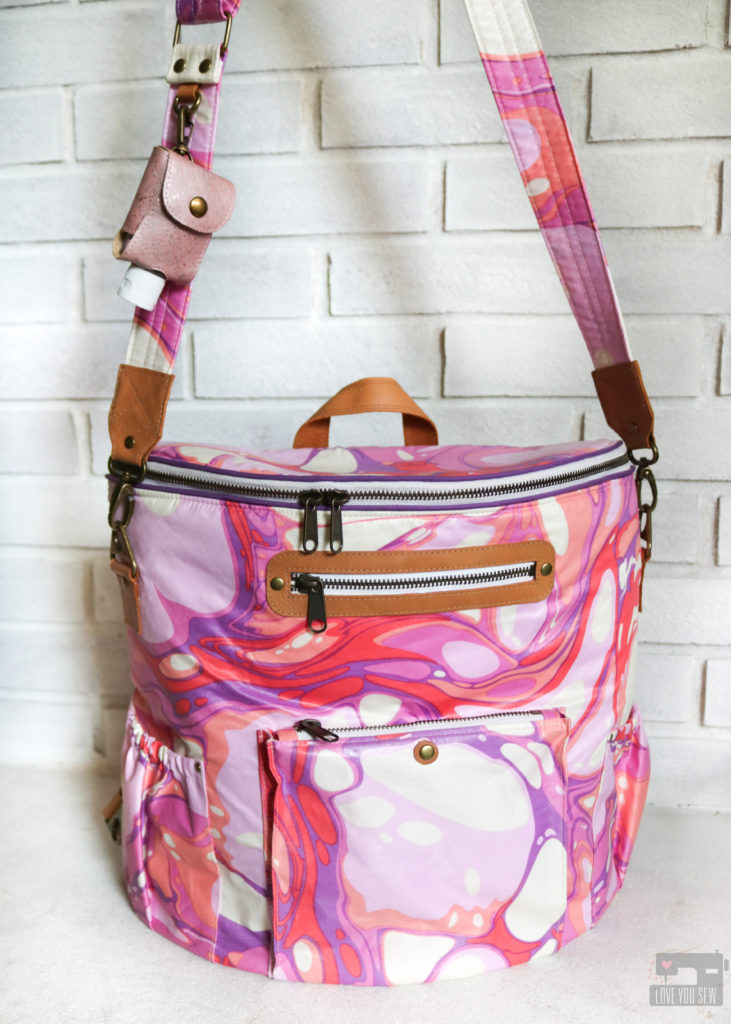


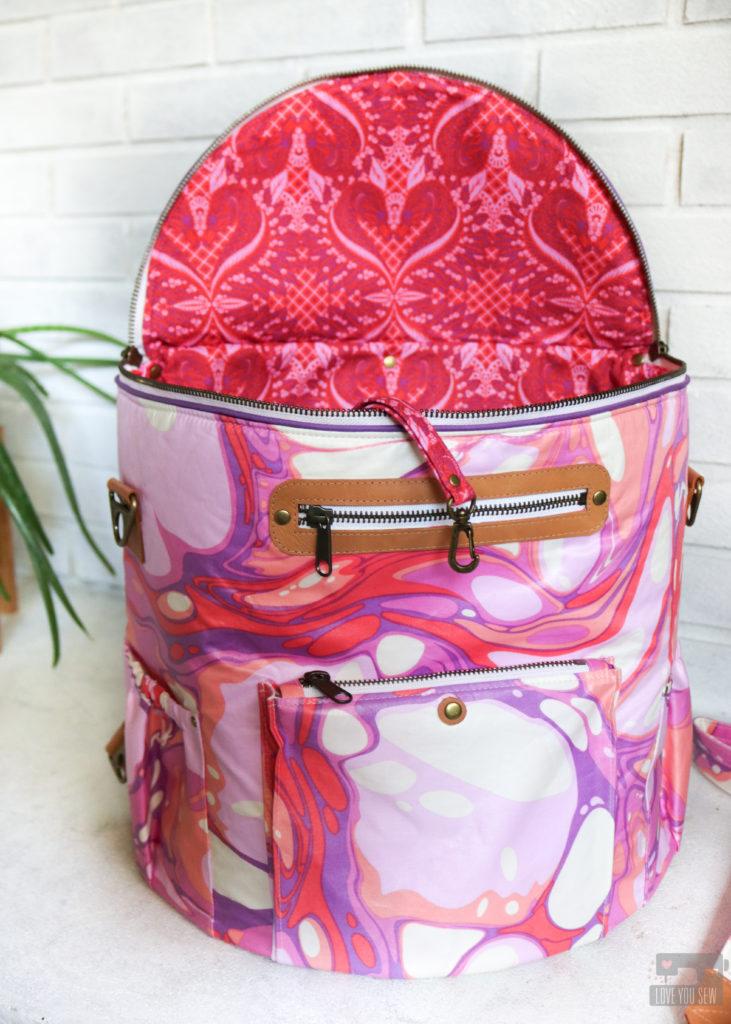
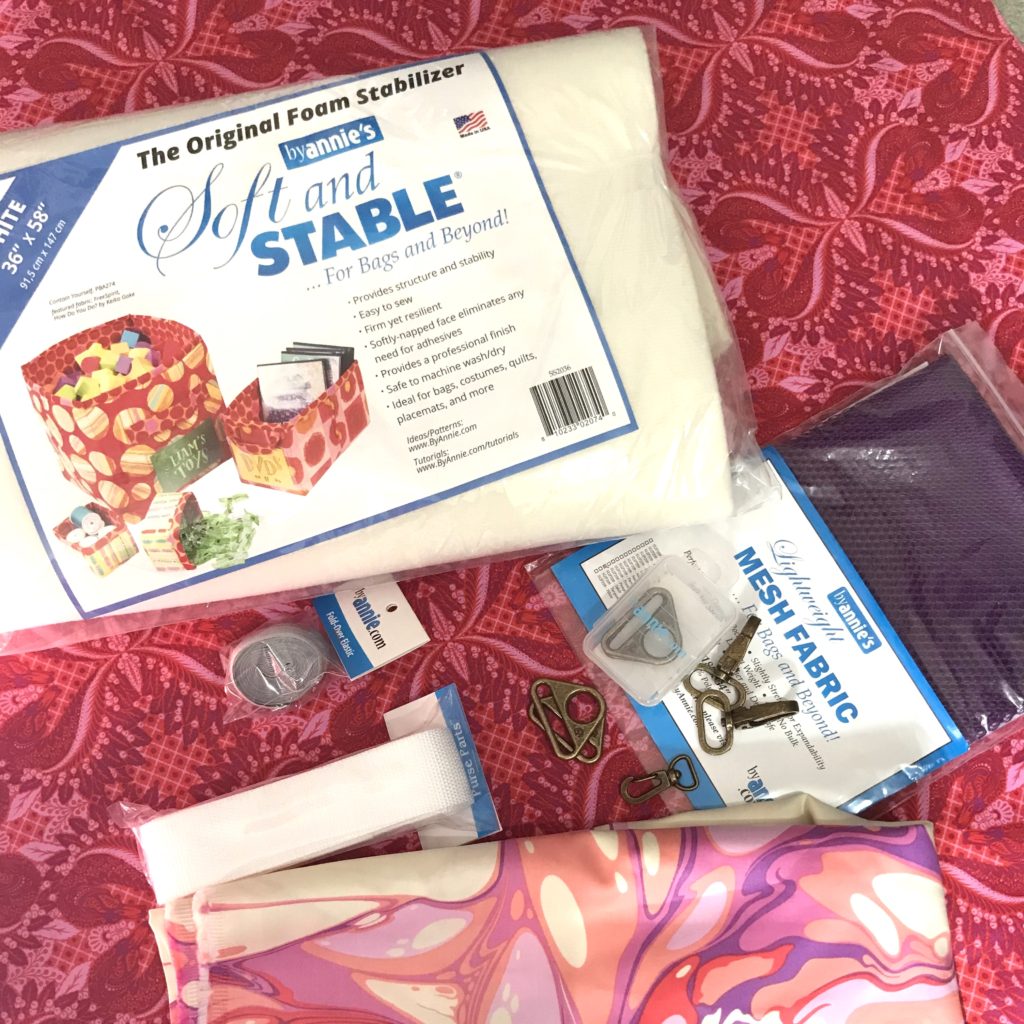
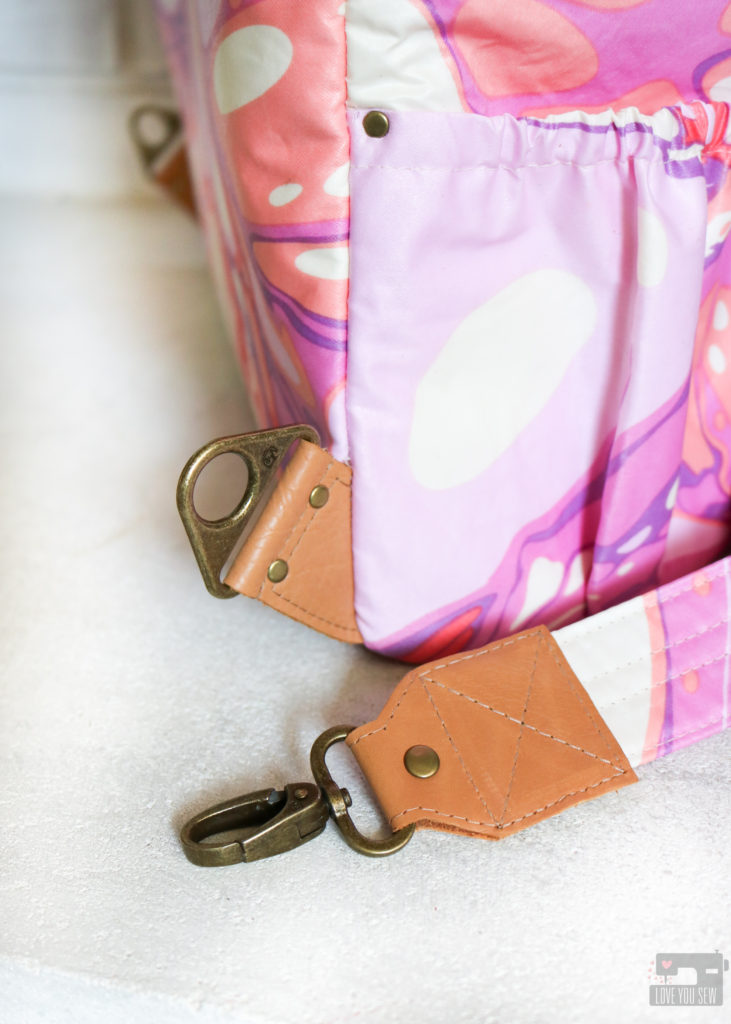
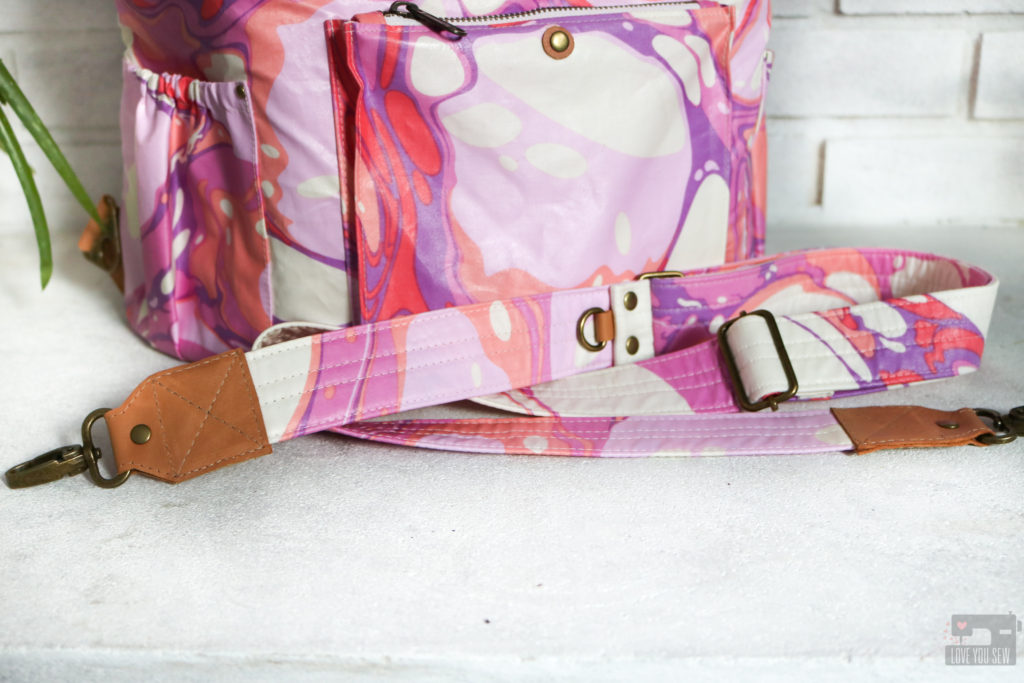
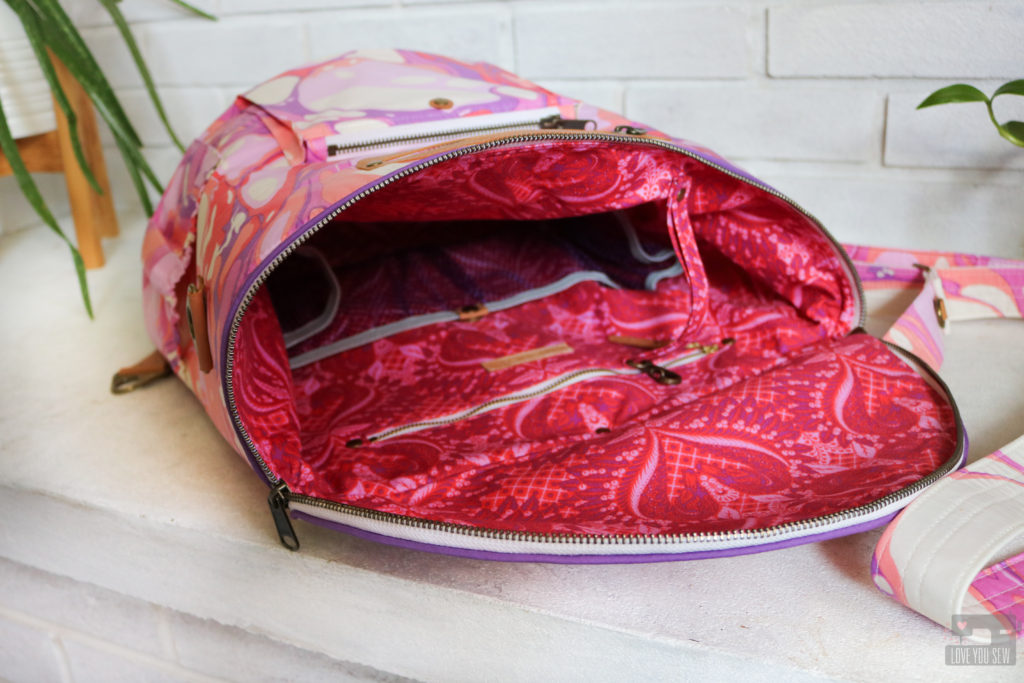
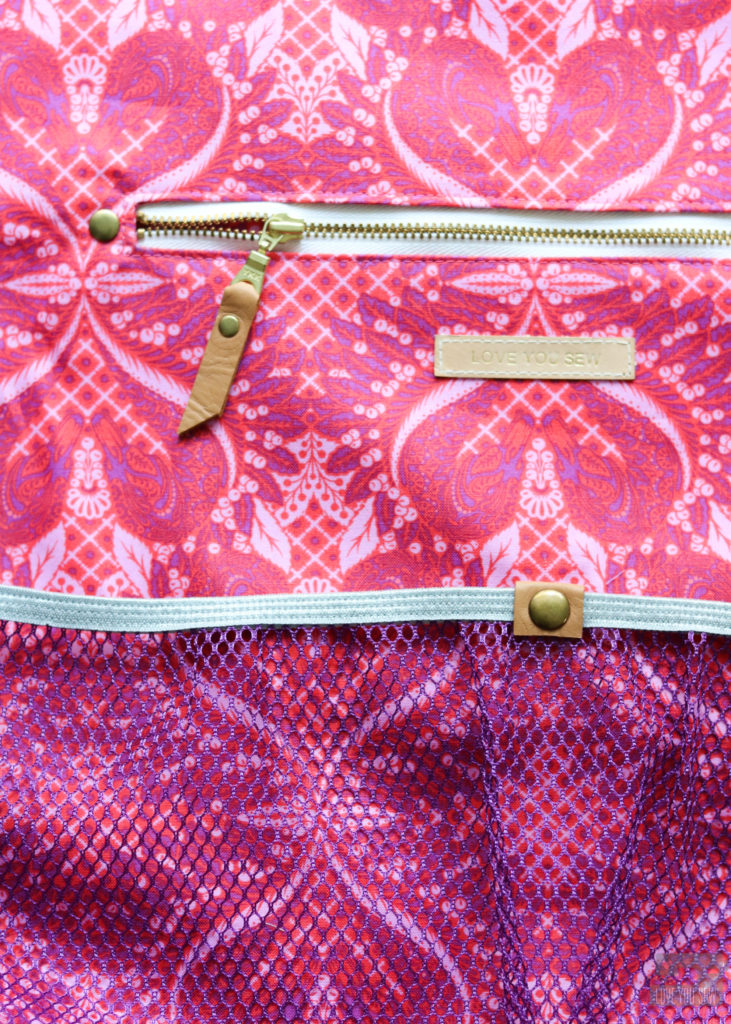
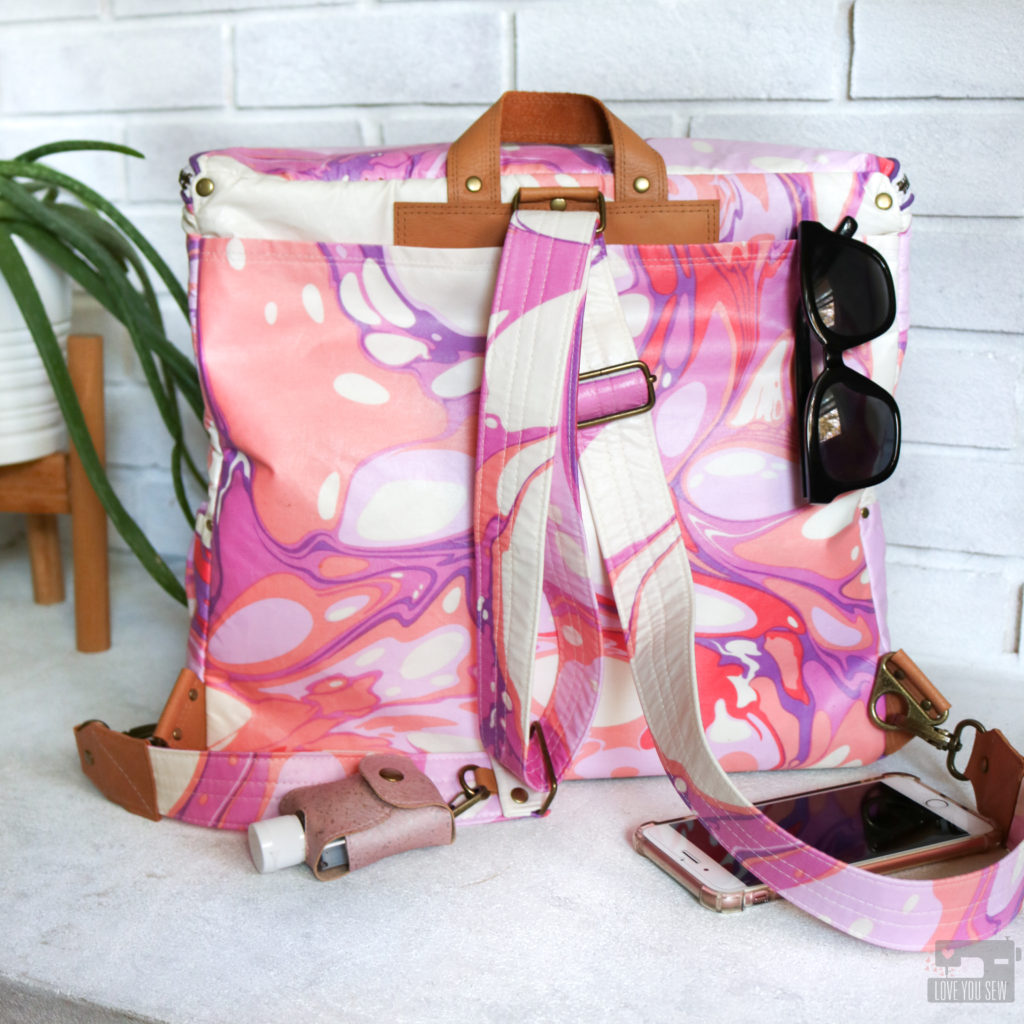
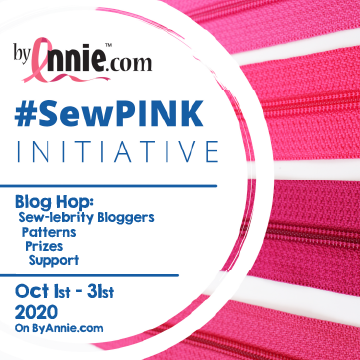
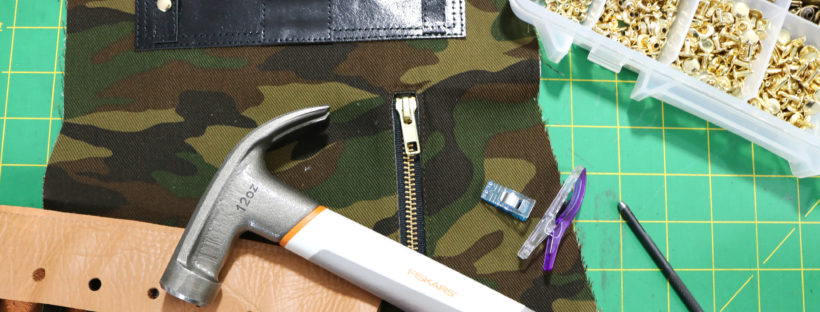
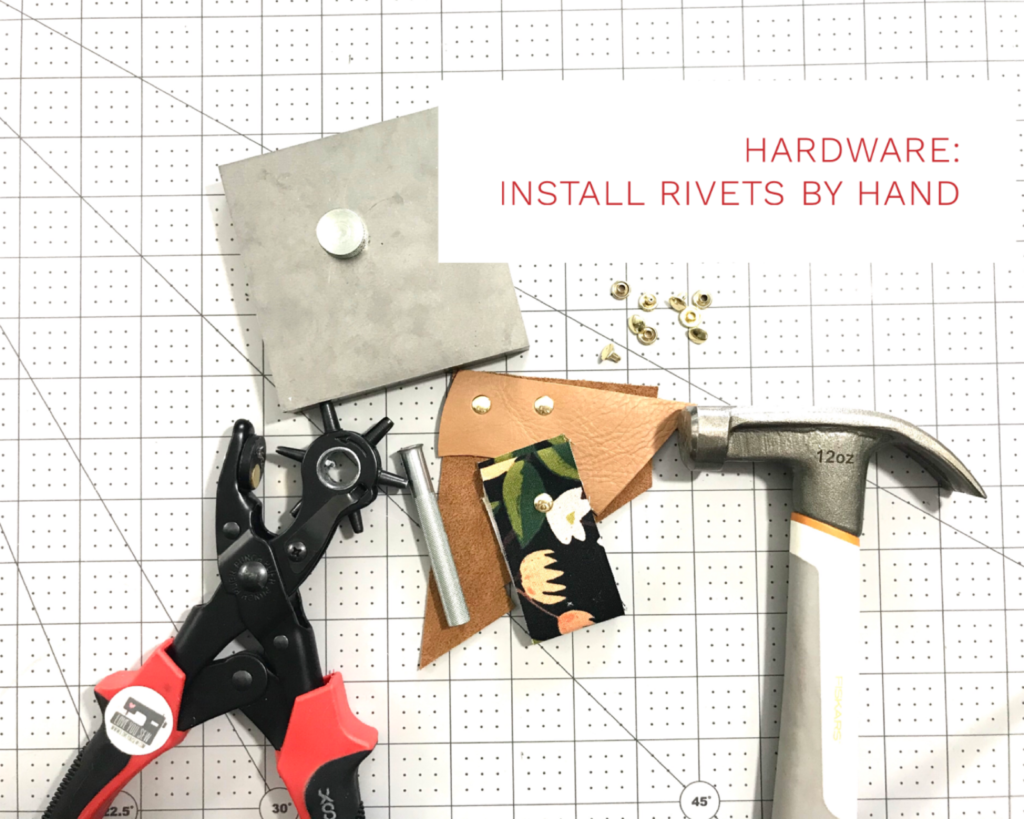
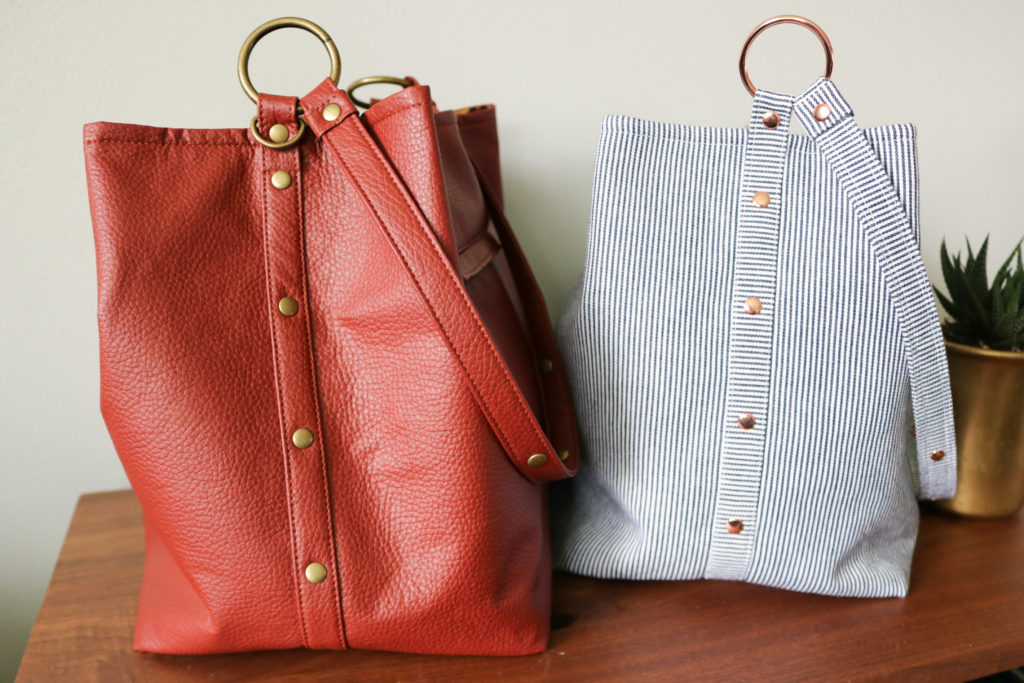
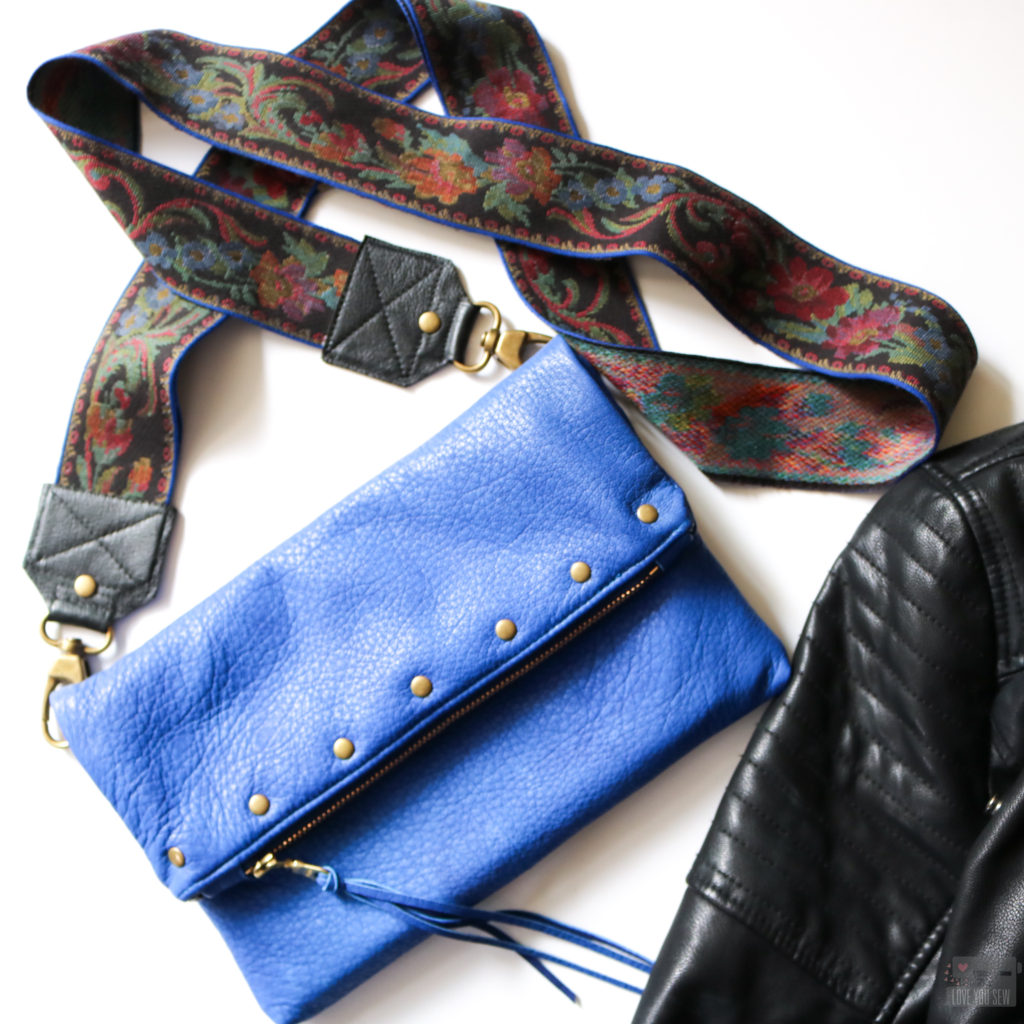
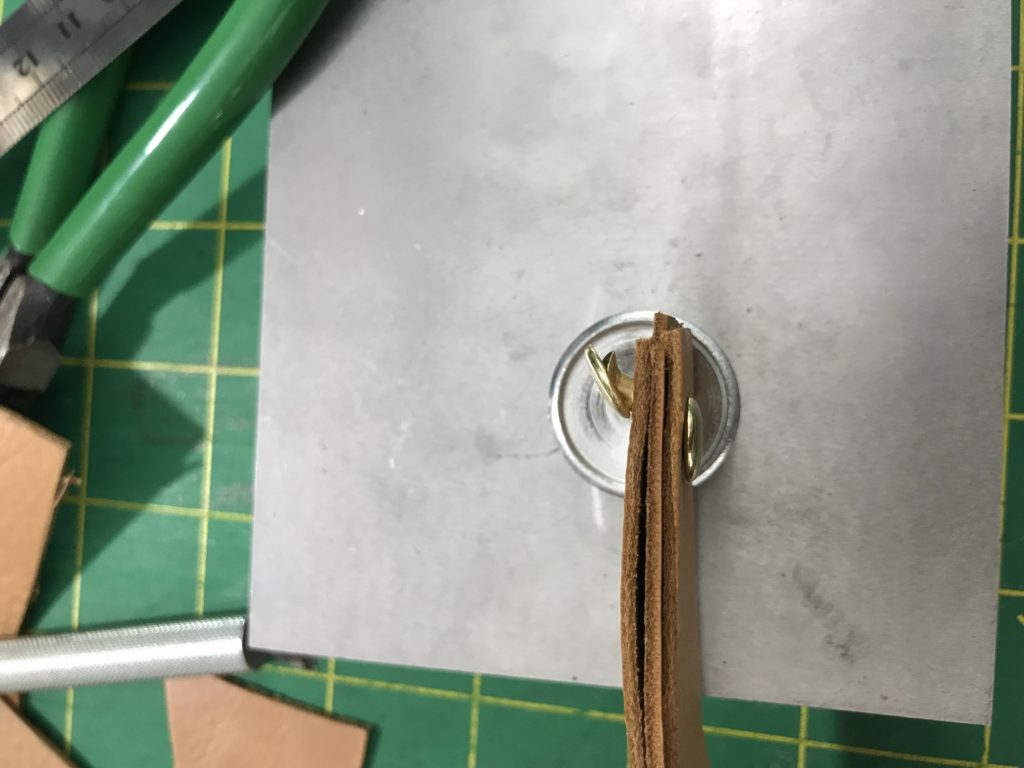
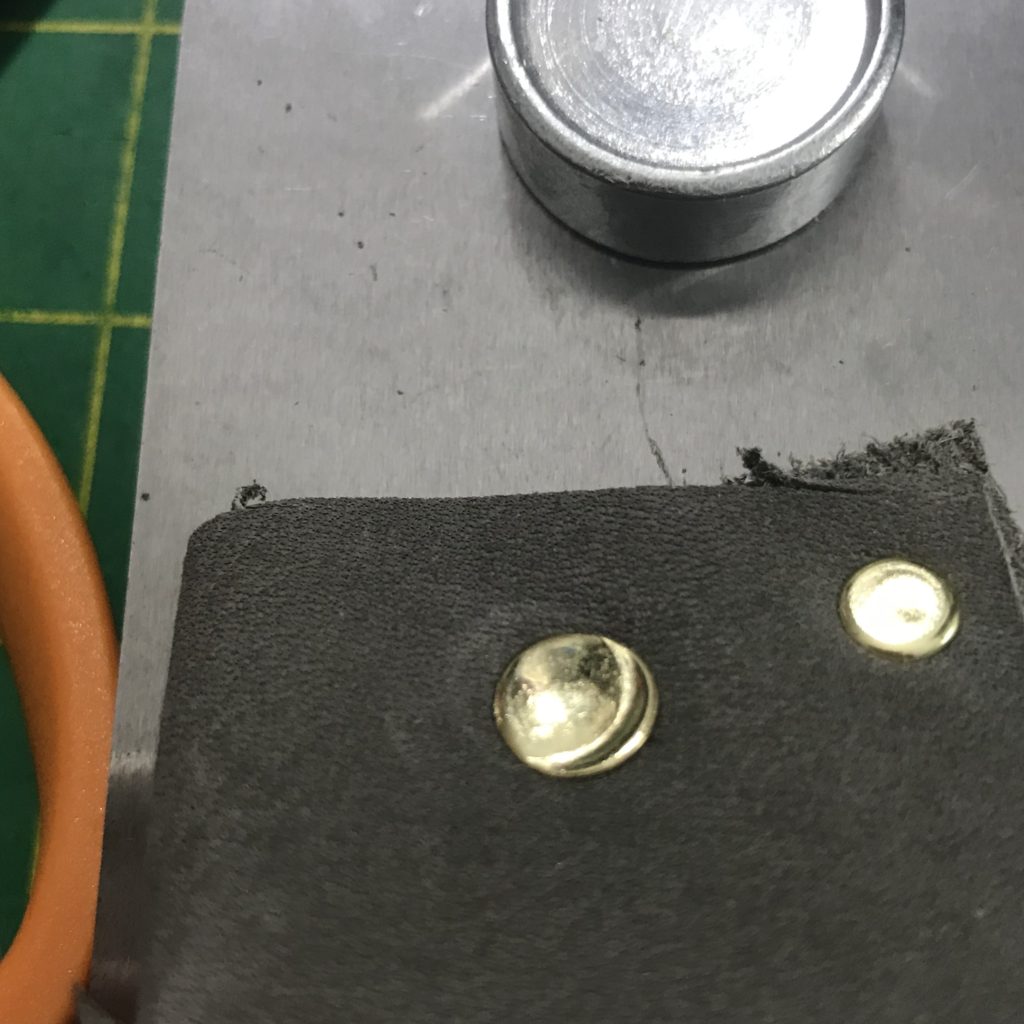
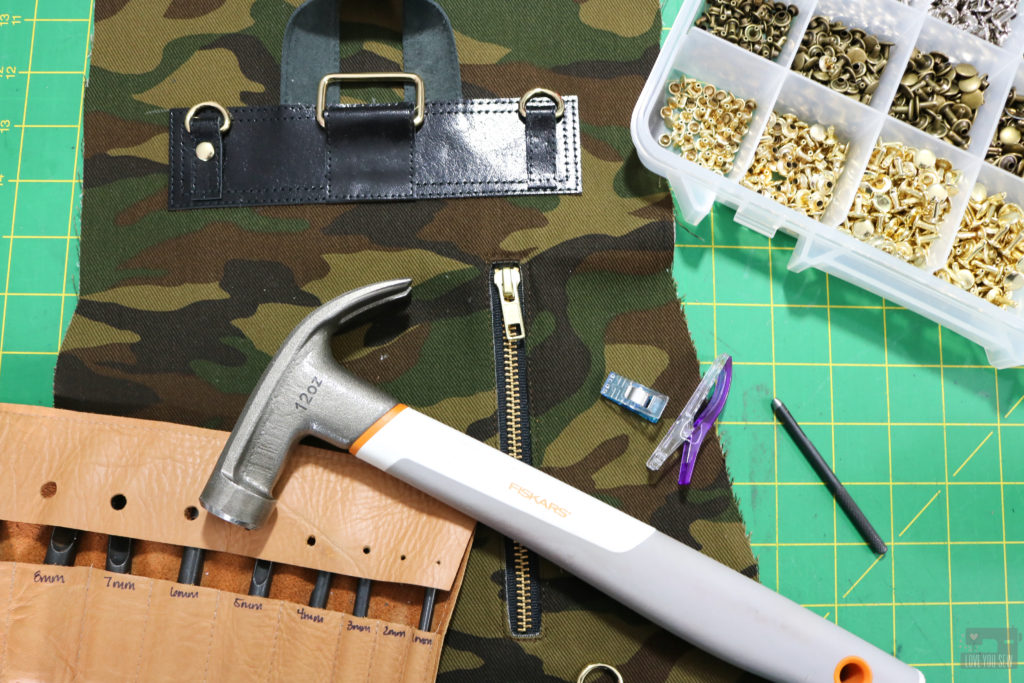
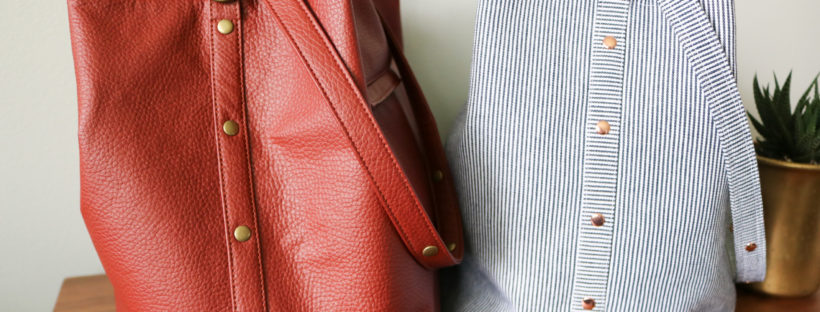
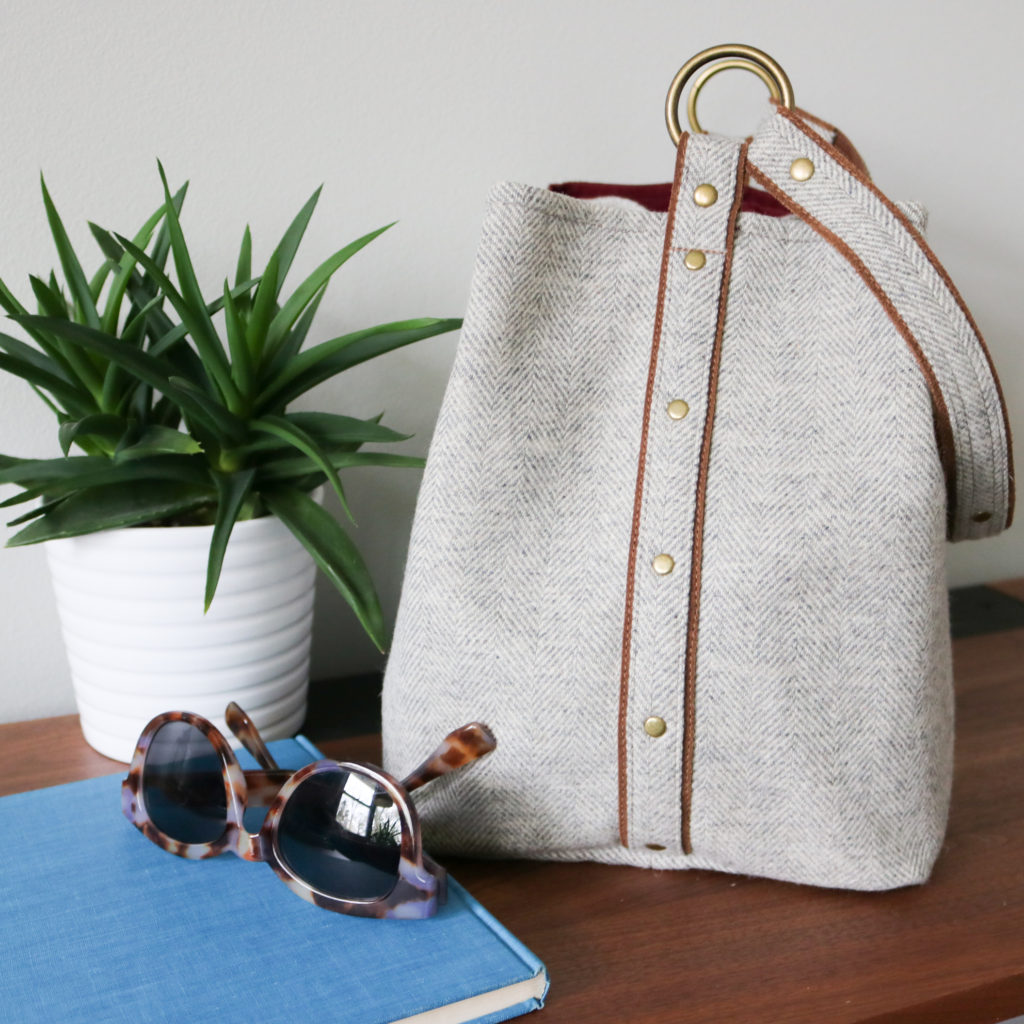 This bag is named after another one of my sweet nieces, Megan. Every time I would see her, she always carried around a large purse and I knew a generously sized bucket bag would HAVE to be her’s! She was always an avid reader and so this bag can carry around a small library if needed. Megan loves theater and has SUCH a beautiful voice. It only made sense to have plenty of mix and match bag options for whatever “role” would come next. Like my dear Megan, this bag is practical yet has just enough edge to stand out from the crowd.
This bag is named after another one of my sweet nieces, Megan. Every time I would see her, she always carried around a large purse and I knew a generously sized bucket bag would HAVE to be her’s! She was always an avid reader and so this bag can carry around a small library if needed. Megan loves theater and has SUCH a beautiful voice. It only made sense to have plenty of mix and match bag options for whatever “role” would come next. Like my dear Megan, this bag is practical yet has just enough edge to stand out from the crowd.
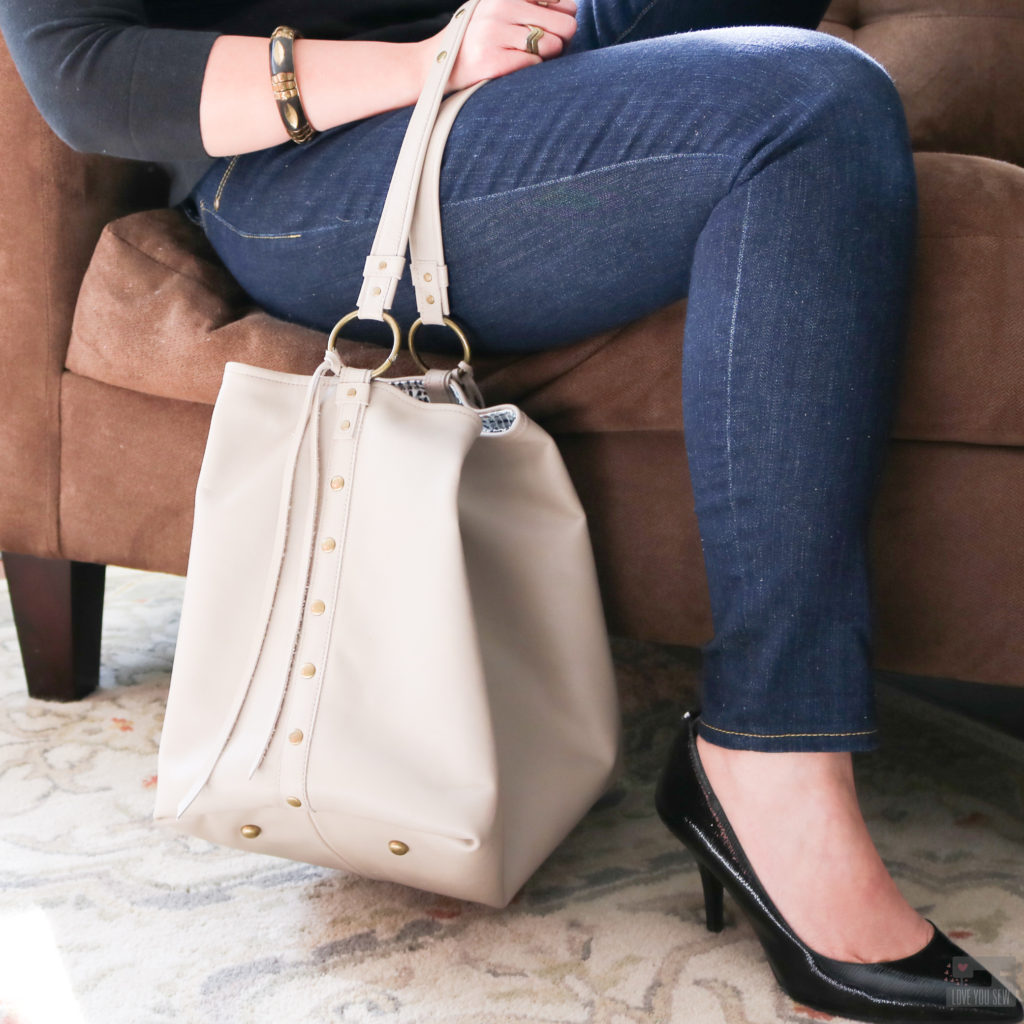 I’ve made nine different versions of the Megan Bucket Bag, starting with the OG, made with buttery taupe cowhide, which you can read about
I’ve made nine different versions of the Megan Bucket Bag, starting with the OG, made with buttery taupe cowhide, which you can read about 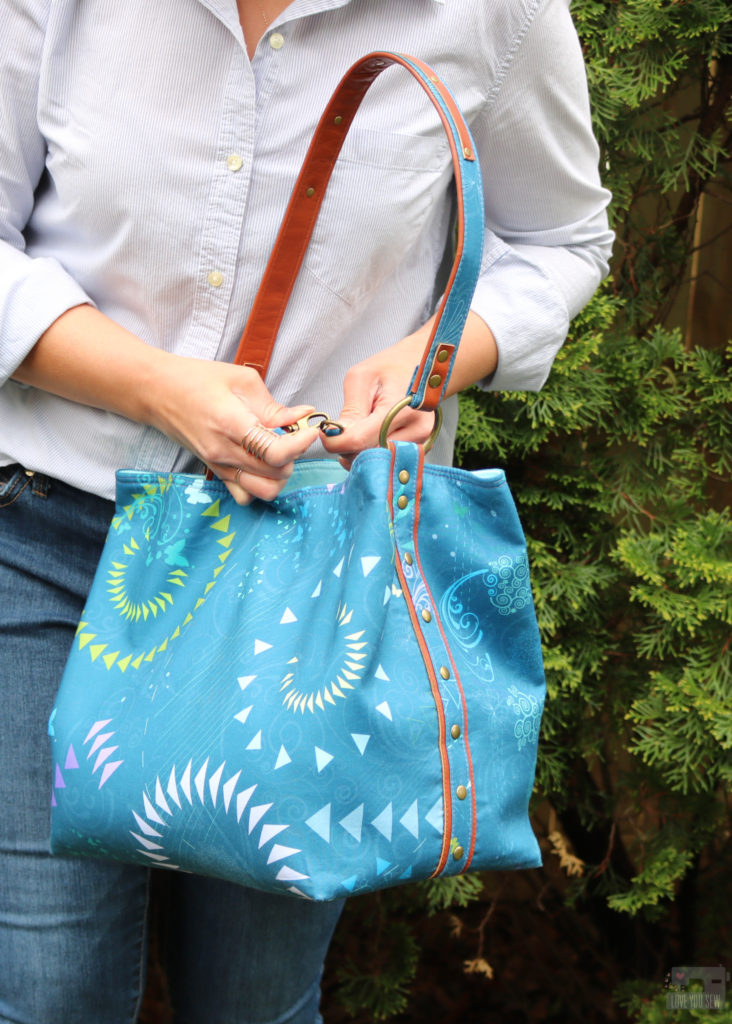 This was another prototype version you can check out here. This was my first fabric version I made while, of course, holding onto the leather details. I still love that extra thin piece of leather on top of the strap….I’ll have to remember that for my next Megan bag!
This was another prototype version you can check out here. This was my first fabric version I made while, of course, holding onto the leather details. I still love that extra thin piece of leather on top of the strap….I’ll have to remember that for my next Megan bag!
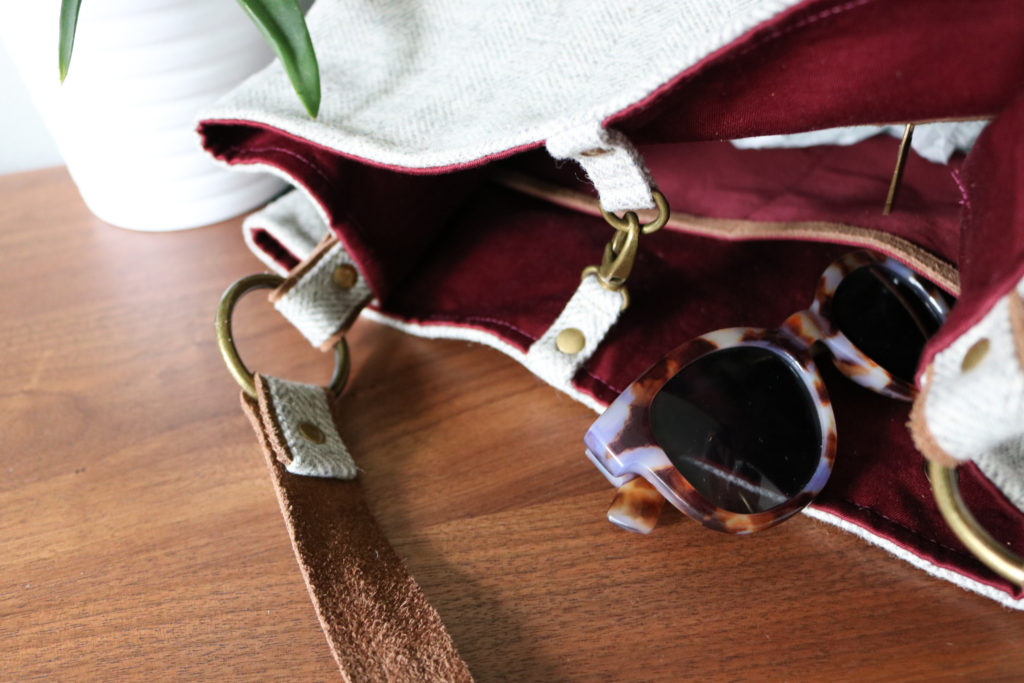 After teaching many bag classes and workshops, I know that many students want to make professional looking bags, but don’t necessarily have all the right equipment – including a heavy duty sewing machine. So my goal with the construction, was to use some alternative techniques to take the bulk out of bag-making. This helps to think outside the box so you can make bags with a wider array of equipment…not just industrial grade machines.
After teaching many bag classes and workshops, I know that many students want to make professional looking bags, but don’t necessarily have all the right equipment – including a heavy duty sewing machine. So my goal with the construction, was to use some alternative techniques to take the bulk out of bag-making. This helps to think outside the box so you can make bags with a wider array of equipment…not just industrial grade machines.
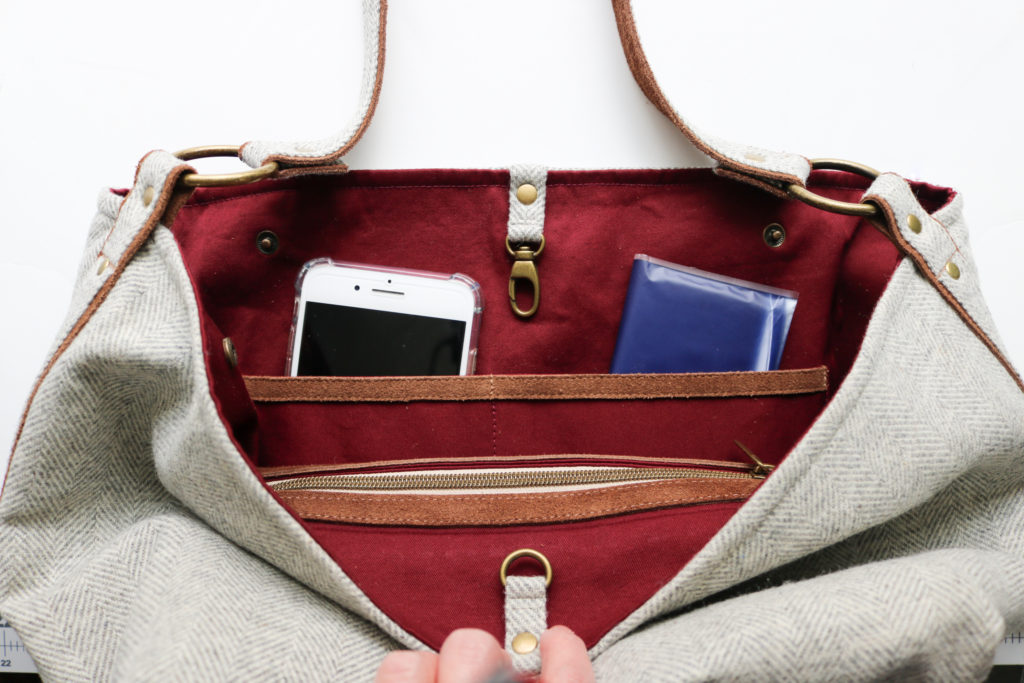 “The Megan Bucket Bag is a fresh take on the classic slouchy bag silhouette, but with a more pronounced cube shape. The lines are clean with side seams hidden by overlays and rivets. There are two different views whether you want to make the Megan out of one fabric, or if you would like to use a raw-edge accent fabric to add a little more depth to the look. With this pattern, you will learn different strap making techniques to take the bulk out of your fabric and gain ways to present a welt zipper pocket with plates or a cover. You will also learn an off-set bag technique for the overlays that won’t compromise your side seam stitching. There are plenty of options with snaps and the use of accent fabric for you to mix and match for your perfect bag.”
This is a pattern for you to learn:
“The Megan Bucket Bag is a fresh take on the classic slouchy bag silhouette, but with a more pronounced cube shape. The lines are clean with side seams hidden by overlays and rivets. There are two different views whether you want to make the Megan out of one fabric, or if you would like to use a raw-edge accent fabric to add a little more depth to the look. With this pattern, you will learn different strap making techniques to take the bulk out of your fabric and gain ways to present a welt zipper pocket with plates or a cover. You will also learn an off-set bag technique for the overlays that won’t compromise your side seam stitching. There are plenty of options with snaps and the use of accent fabric for you to mix and match for your perfect bag.”
This is a pattern for you to learn:
 View A was designed for a single fabric and perfect for a newer bag-maker who wants to just use canvas. This is a great way to start and learn new purse techniques without having to deal with other substrates. However, this same version can be used with a single faux leather and still have a striking look. This view has a handy outside pocket with a cover to keep the look smooth and sleek but still has other details like the strap loops to add more interest.
View A was designed for a single fabric and perfect for a newer bag-maker who wants to just use canvas. This is a great way to start and learn new purse techniques without having to deal with other substrates. However, this same version can be used with a single faux leather and still have a striking look. This view has a handy outside pocket with a cover to keep the look smooth and sleek but still has other details like the strap loops to add more interest.
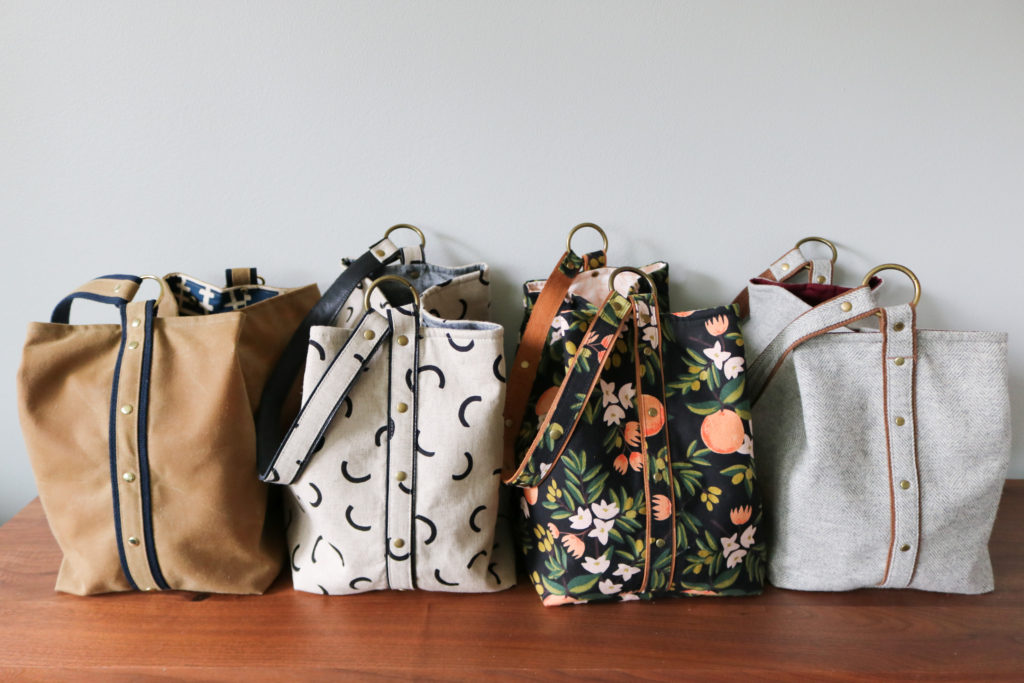 View B uses an accent fabric such as leather, suede, cork or vinyl that can be left raw edged without fraying. These substrates are great looks to add more depth and texture to a bag. The accent fabric is incorporated on to the side overlays, strap, and is used as decorative plating against the zipper pocket and slip pocket. However, you can also swap out the accent fabric with some webbing to speed up your project.
View B uses an accent fabric such as leather, suede, cork or vinyl that can be left raw edged without fraying. These substrates are great looks to add more depth and texture to a bag. The accent fabric is incorporated on to the side overlays, strap, and is used as decorative plating against the zipper pocket and slip pocket. However, you can also swap out the accent fabric with some webbing to speed up your project.
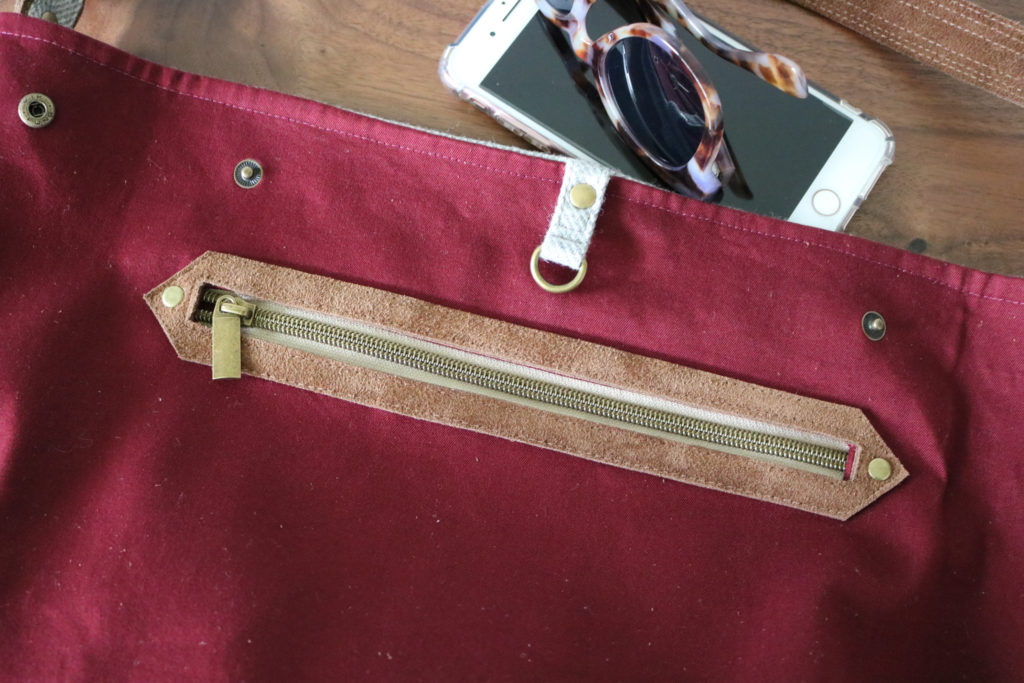 This pattern was written with mid-weight accent fabrics in mind with 2-3mm thickness to have enough structure in the strap. However, I know there are a number of other fabrics you may want to use that are lighter and thinner – especially many types of cork. Consider adding a second layer of accent fabric to the back of the strap as shown below. Play around and see what you like!
This pattern was written with mid-weight accent fabrics in mind with 2-3mm thickness to have enough structure in the strap. However, I know there are a number of other fabrics you may want to use that are lighter and thinner – especially many types of cork. Consider adding a second layer of accent fabric to the back of the strap as shown below. Play around and see what you like!
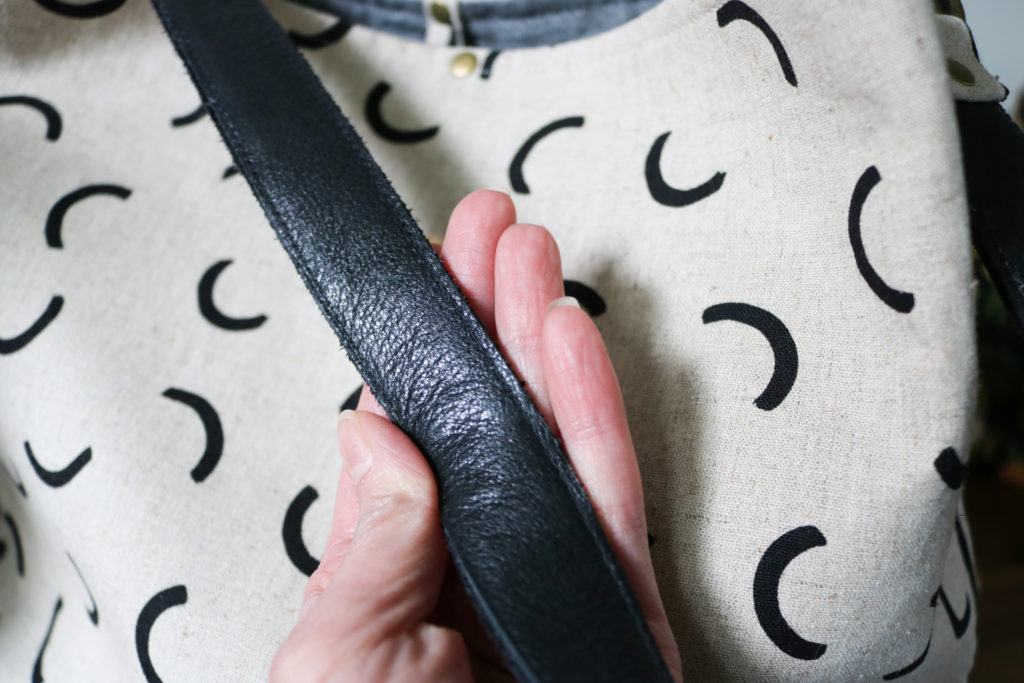
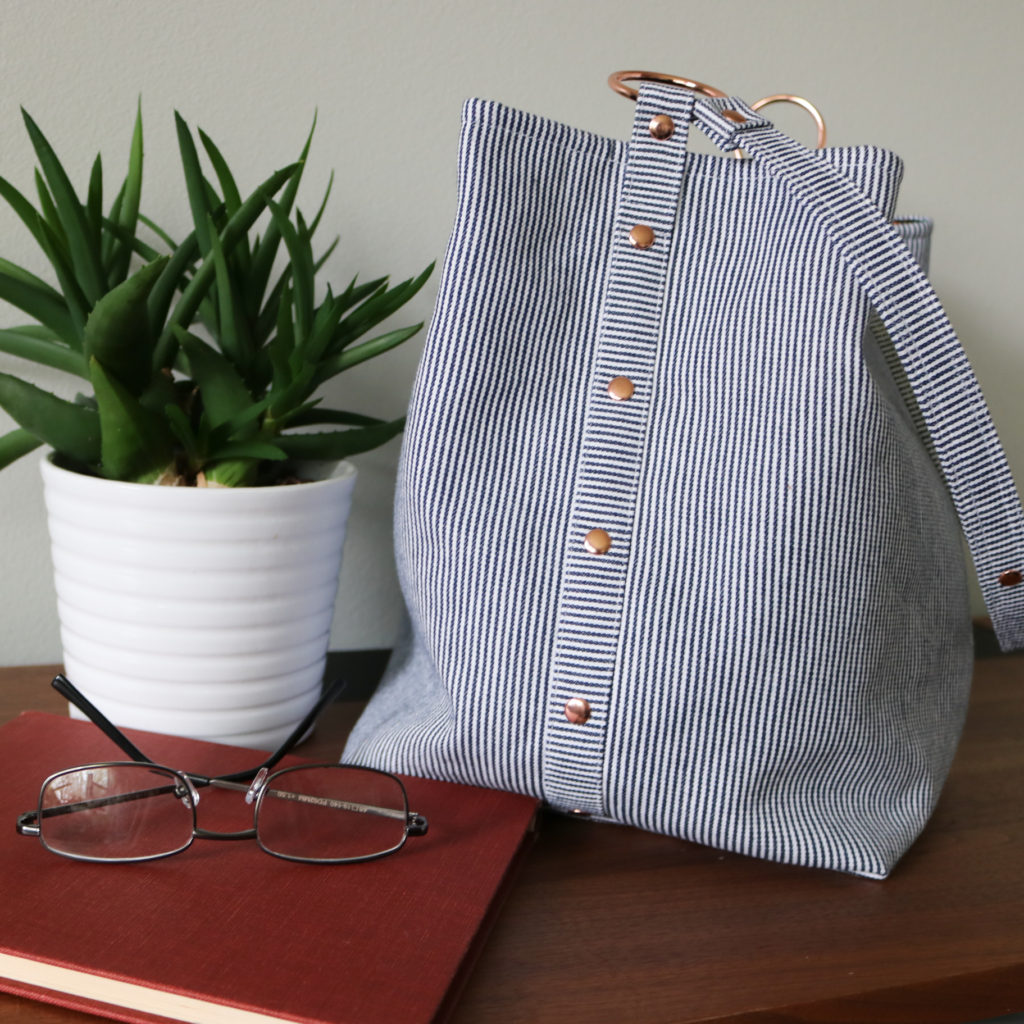 The main aesthetic element to the Megan Bucket Bag is the side overlay with a row of bright beautiful rivets. Although I’ve used rivets for a long time with my bags, they were only in the patterns as alternation options for securing straps and such. This time, the rivets are the featured stars and are not just for looks, but also for structural purposes. They help secure the strap in place around the gorgeous O-rings. This give such a strong, yet delicate look.
The main aesthetic element to the Megan Bucket Bag is the side overlay with a row of bright beautiful rivets. Although I’ve used rivets for a long time with my bags, they were only in the patterns as alternation options for securing straps and such. This time, the rivets are the featured stars and are not just for looks, but also for structural purposes. They help secure the strap in place around the gorgeous O-rings. This give such a strong, yet delicate look.
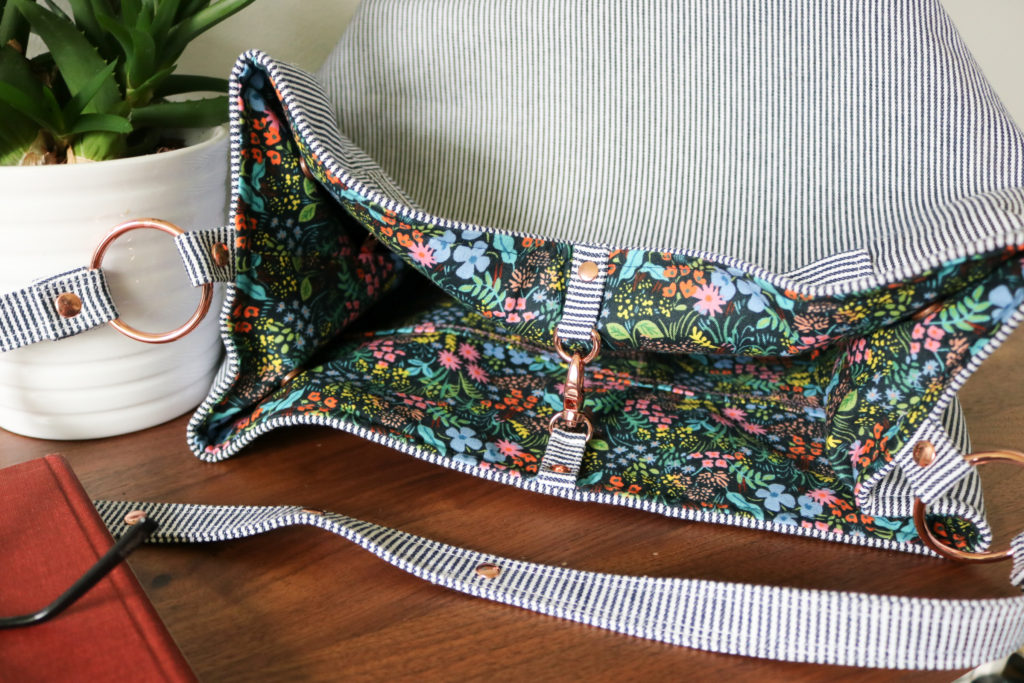 To help hold the shape of the bag and keep contents safe, four sets of snaps are added to the lining. They help keep the cube shape of the Megan while still staying slouchy like a good bucket bag does. The purse can then be easily expanded by just releasing the snaps.
To help hold the shape of the bag and keep contents safe, four sets of snaps are added to the lining. They help keep the cube shape of the Megan while still staying slouchy like a good bucket bag does. The purse can then be easily expanded by just releasing the snaps.
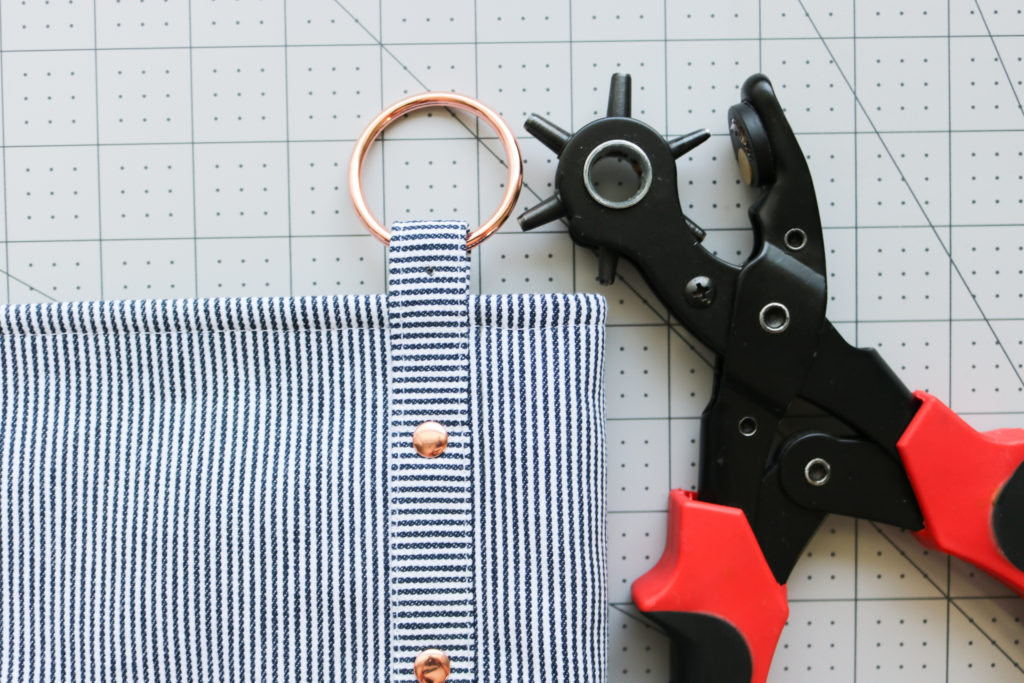 Although the pattern includes the use of rivets and snaps, there are no actual instructions to install them. Since there are SO many different types of hardware out there with multiplied by different tastes of the sewist, there was no way to include instructions for everything. Rivets can be single sided and double-sided. They can be shaped like pyramids, domes, or flat like burrs. Snaps also have a number of different sizes and features as well. I prefer “spring” double cap snaps, but you can use magnetic or even sew-in snaps too! This pattern allows you to use YOUR preference of material. But just like with interfacing, you must remember to follow manufacturer’s instructions. I’ll be showing my preferred methods of rivet and snap installations all next week, so keep an eye out!!!
Although the pattern includes the use of rivets and snaps, there are no actual instructions to install them. Since there are SO many different types of hardware out there with multiplied by different tastes of the sewist, there was no way to include instructions for everything. Rivets can be single sided and double-sided. They can be shaped like pyramids, domes, or flat like burrs. Snaps also have a number of different sizes and features as well. I prefer “spring” double cap snaps, but you can use magnetic or even sew-in snaps too! This pattern allows you to use YOUR preference of material. But just like with interfacing, you must remember to follow manufacturer’s instructions. I’ll be showing my preferred methods of rivet and snap installations all next week, so keep an eye out!!!
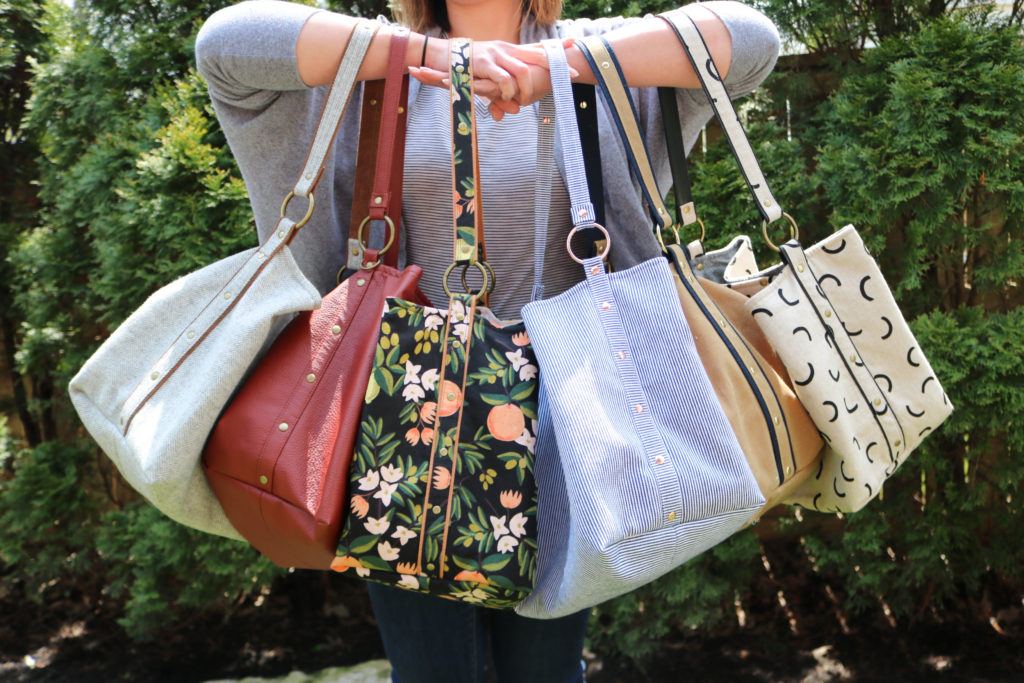 There are truly SO many different ways to make the Megan Bucket Bag. If you are ready to make your own, click below for the pattern AND the hardware kits….it doesn’t get any easier, right?
There are truly SO many different ways to make the Megan Bucket Bag. If you are ready to make your own, click below for the pattern AND the hardware kits….it doesn’t get any easier, right?
